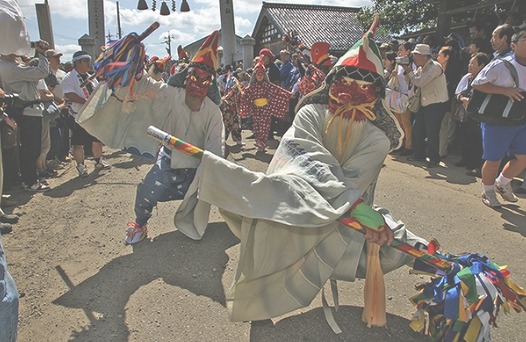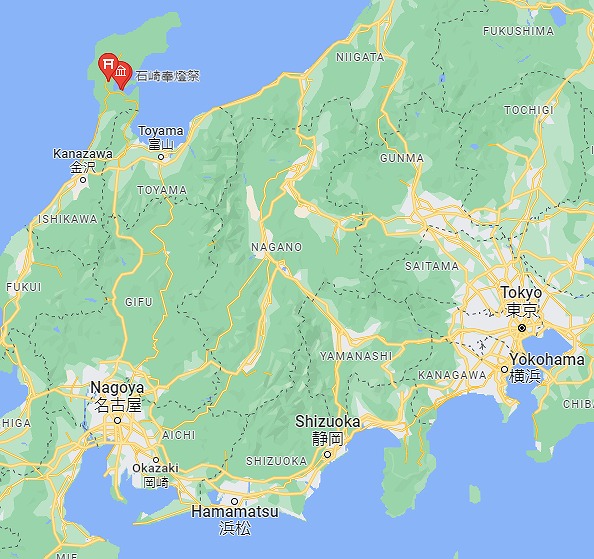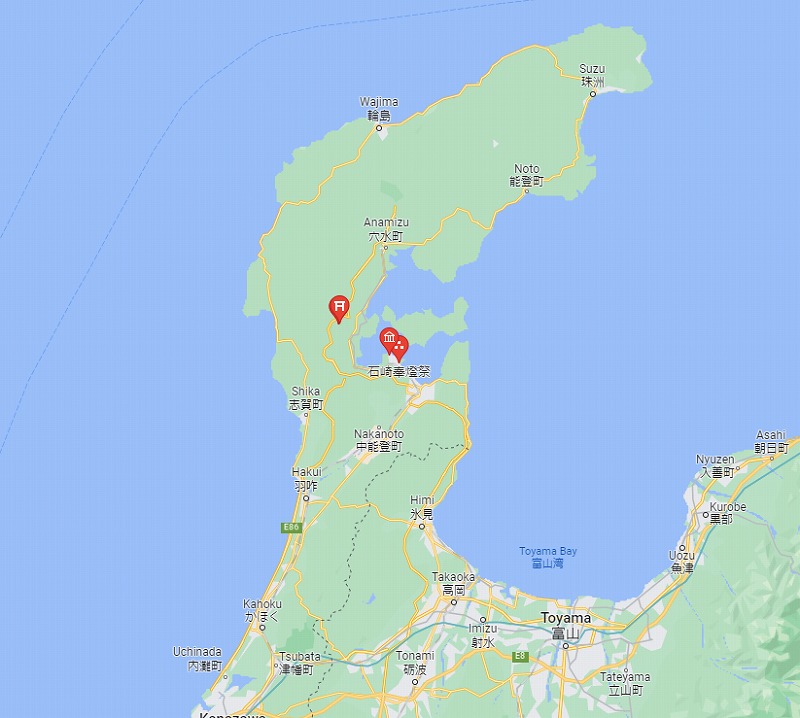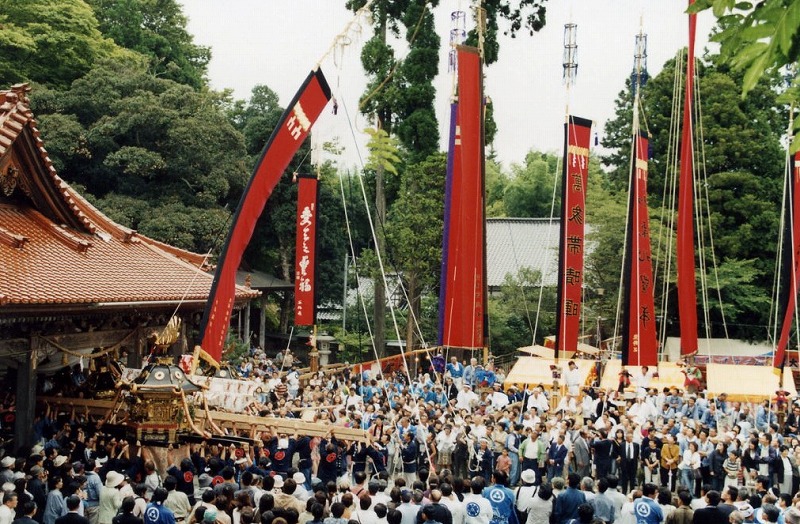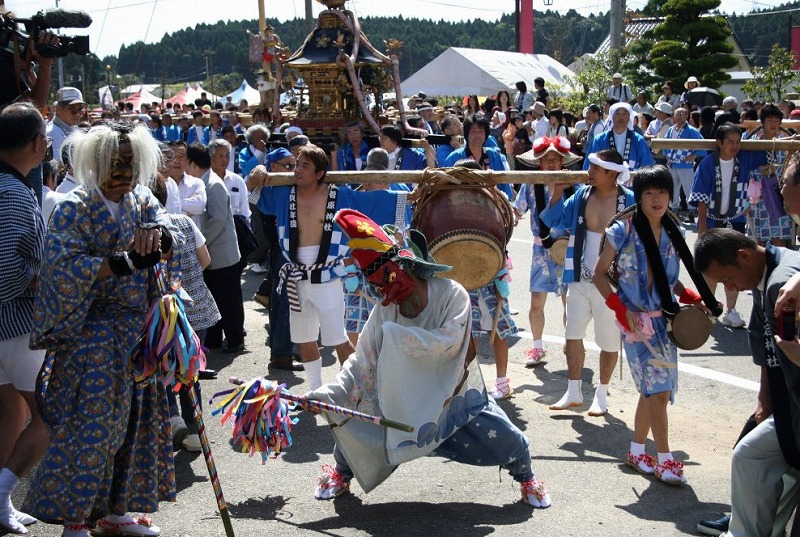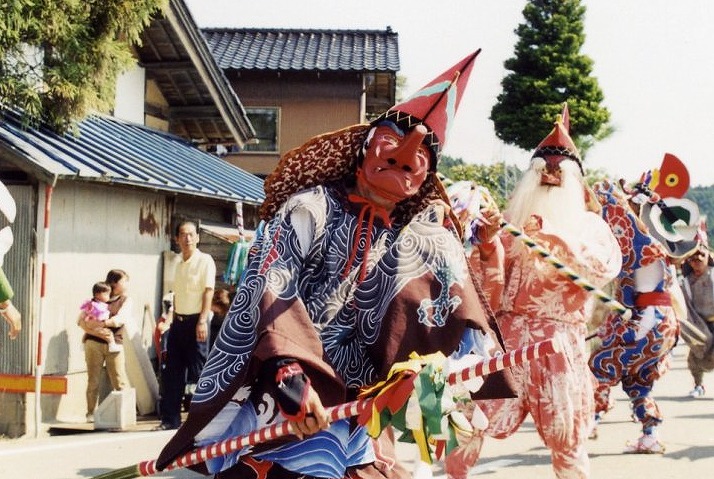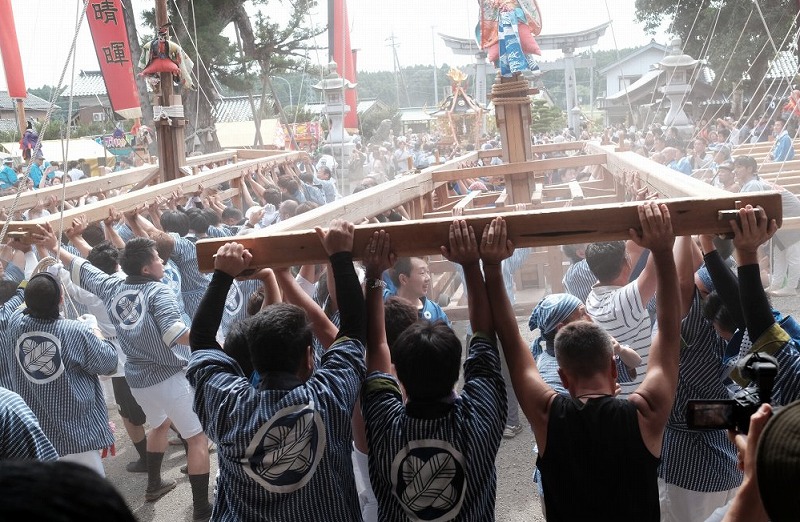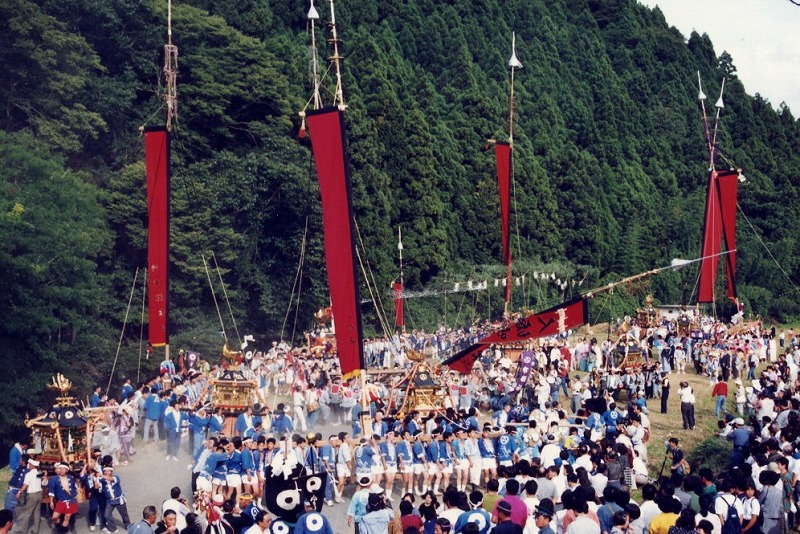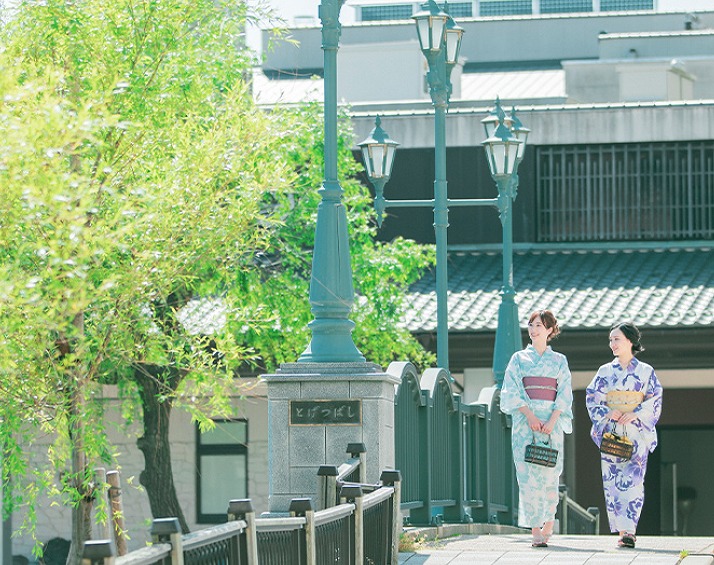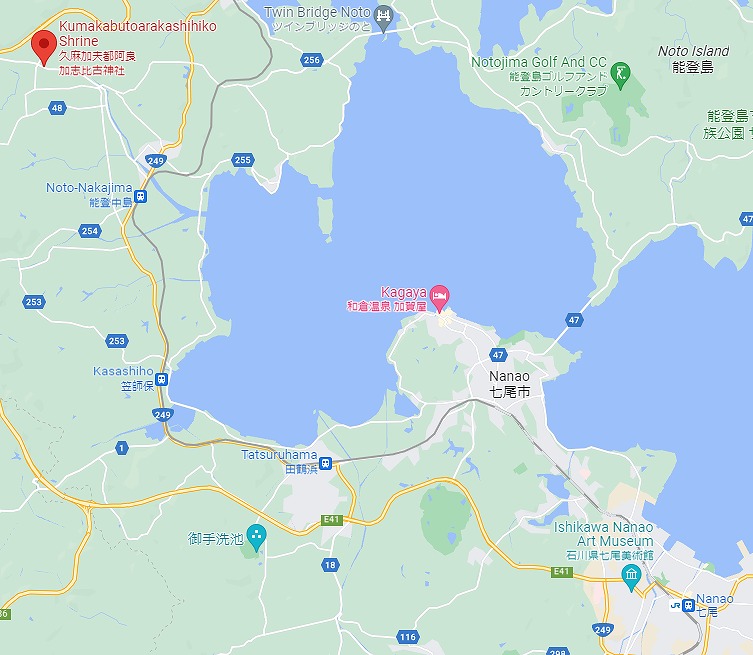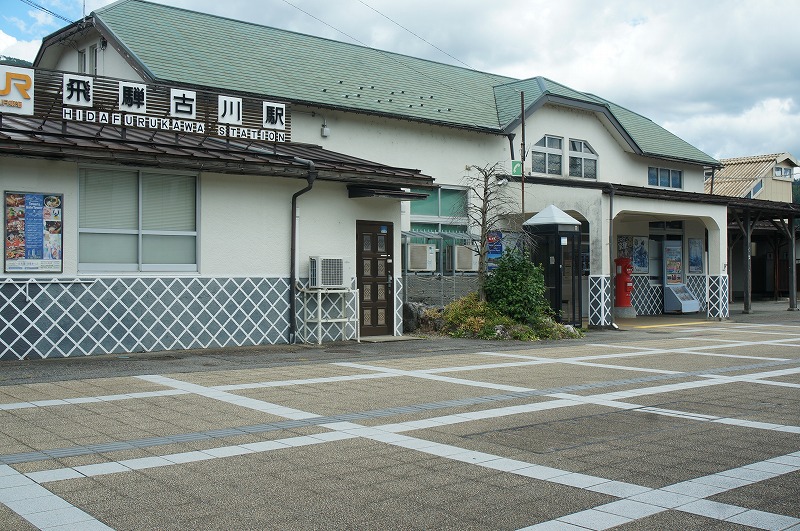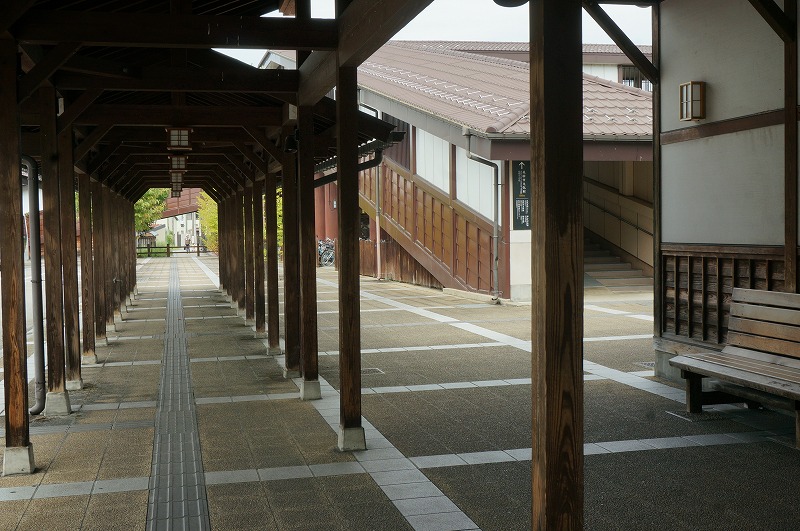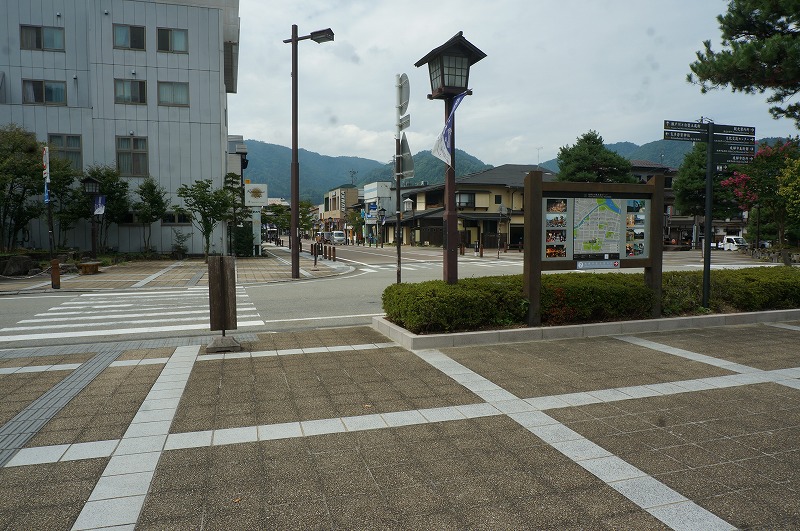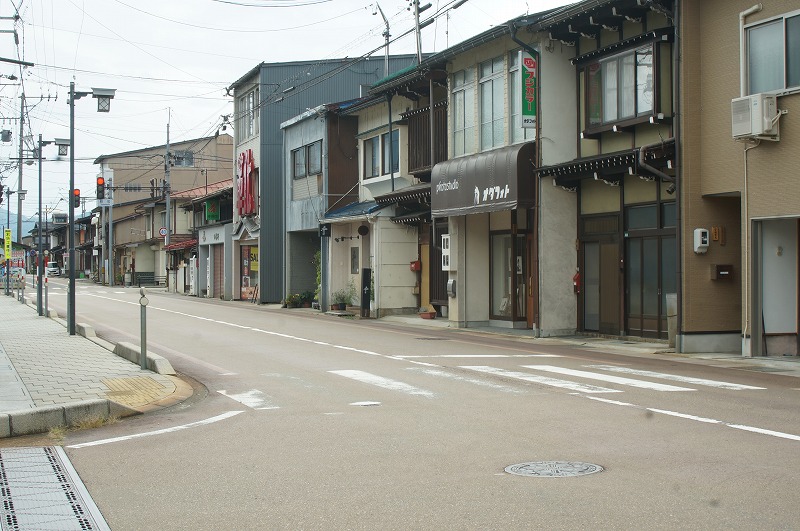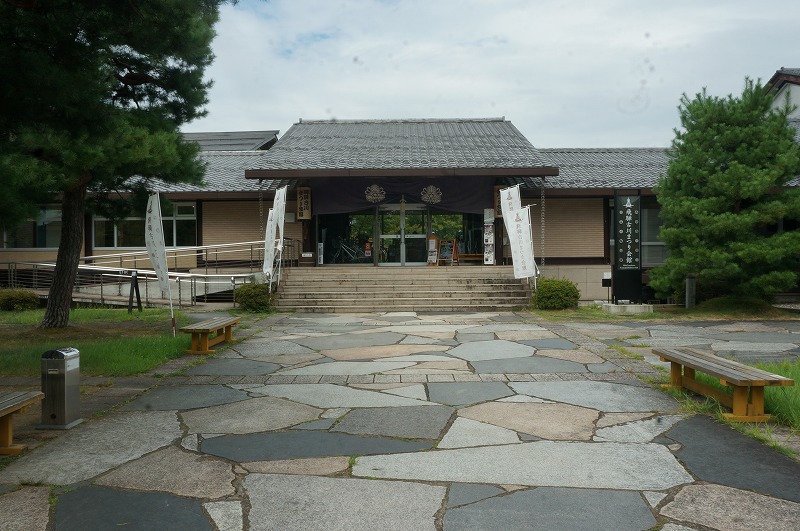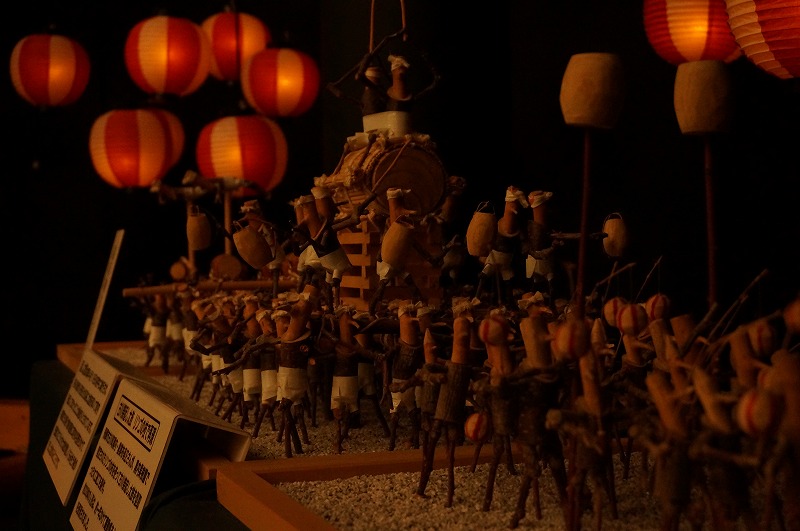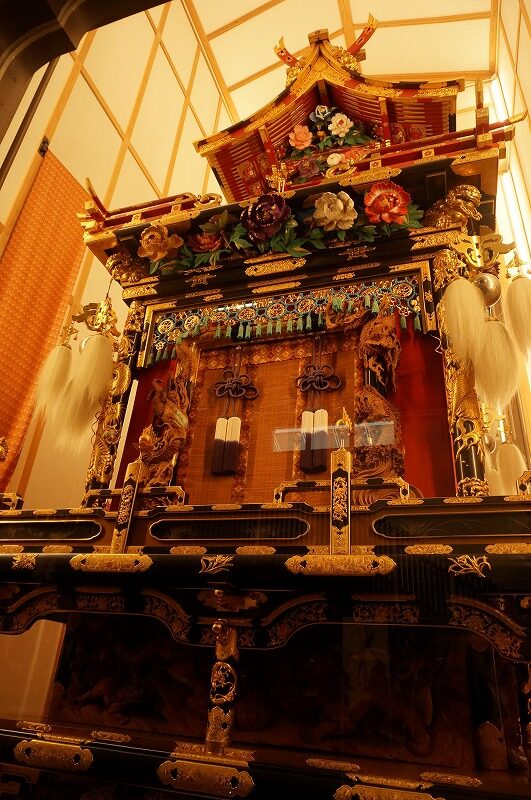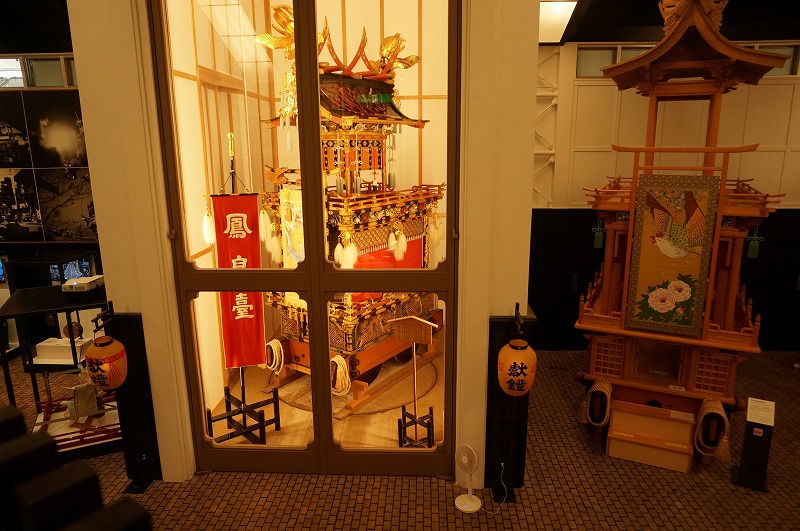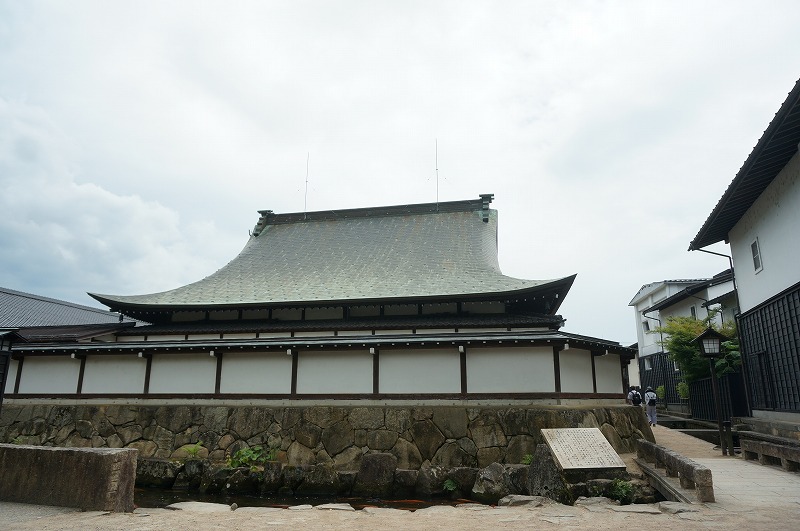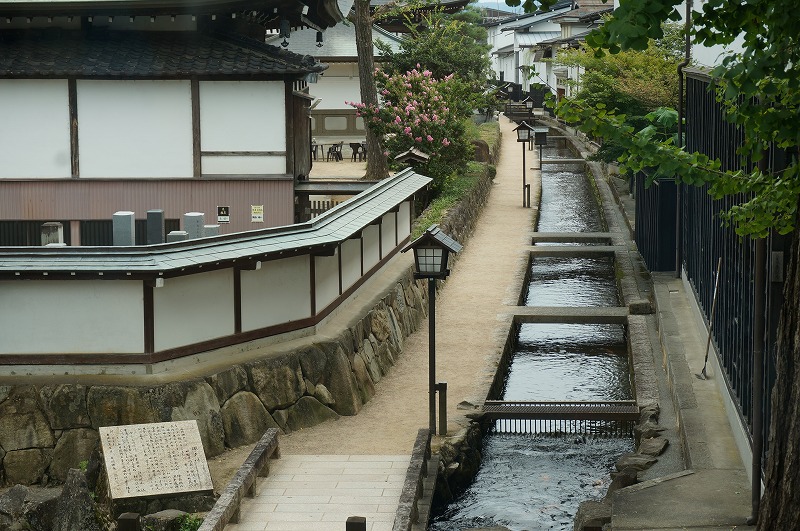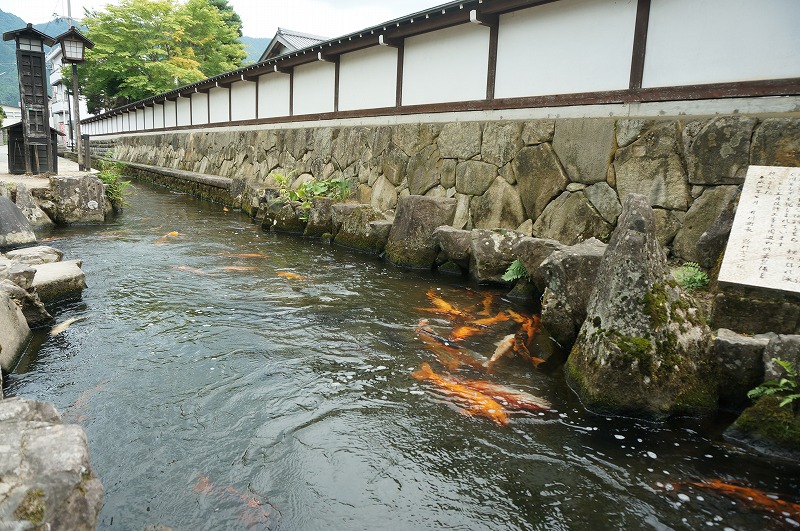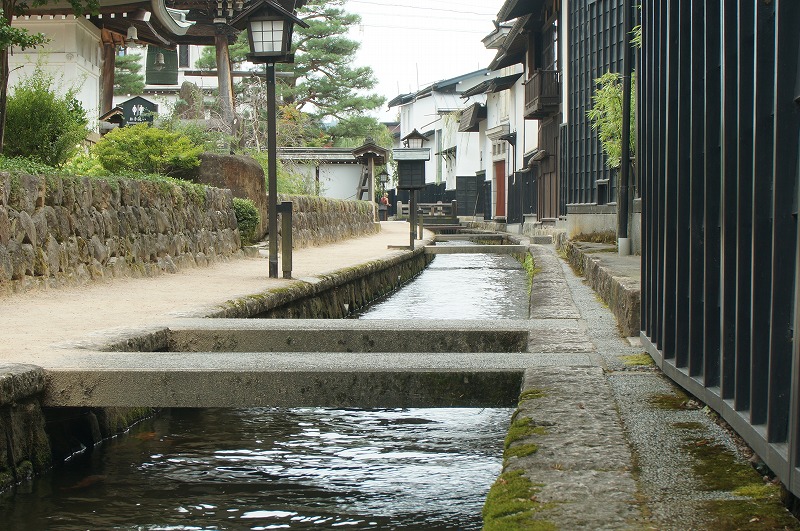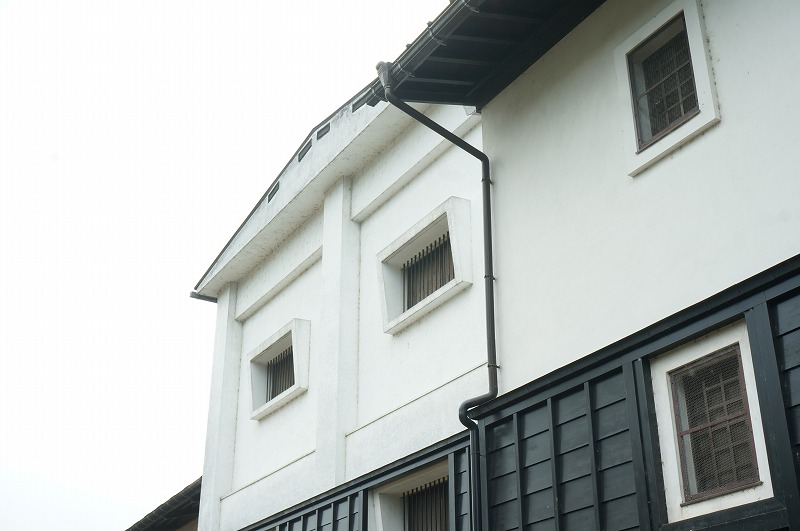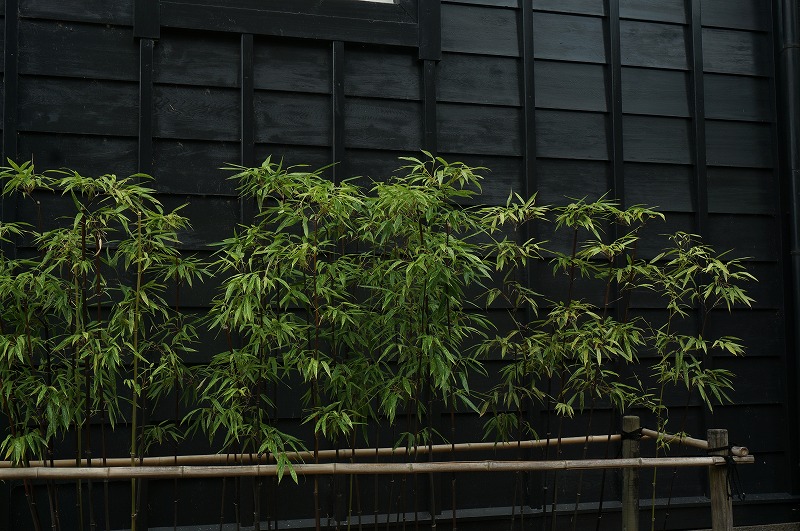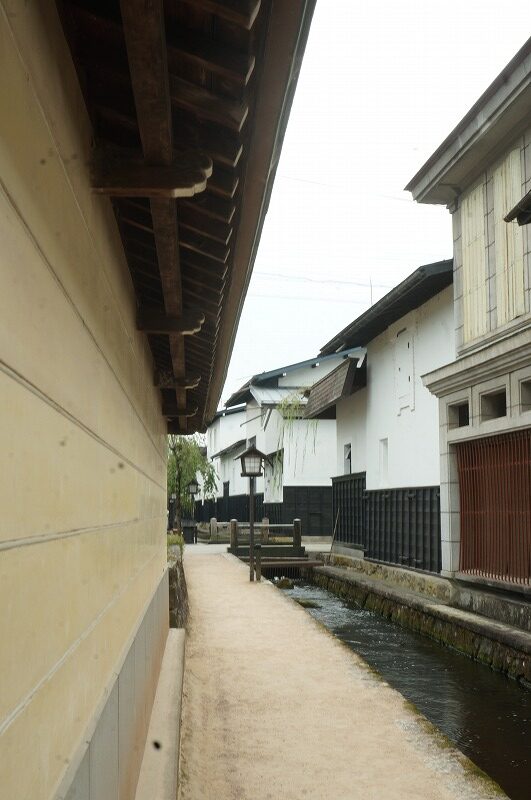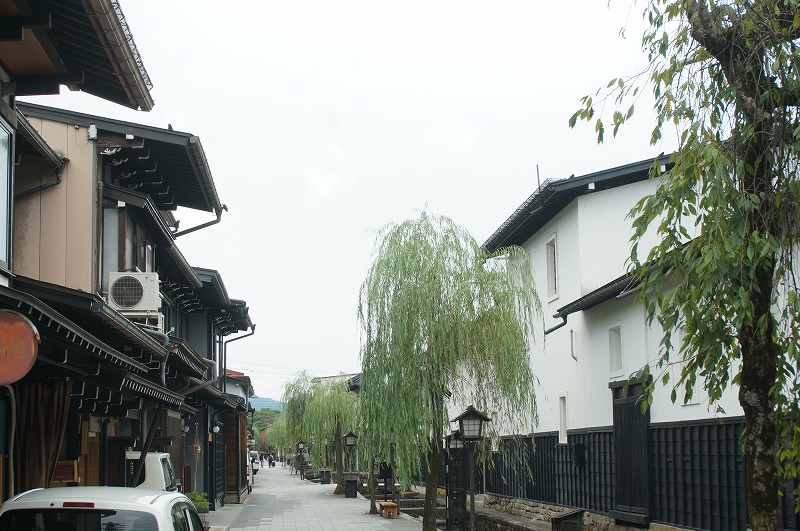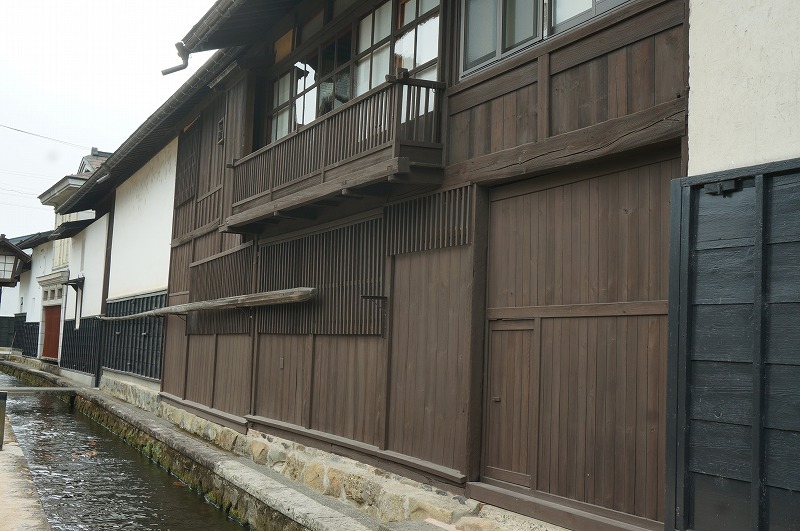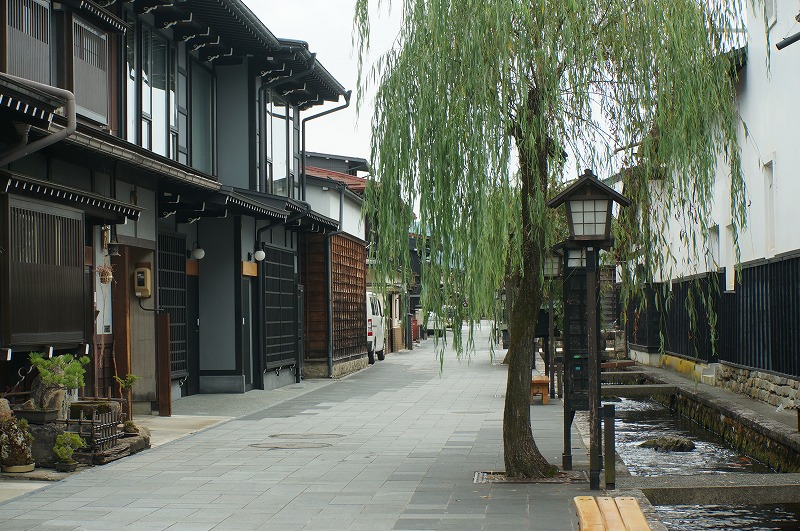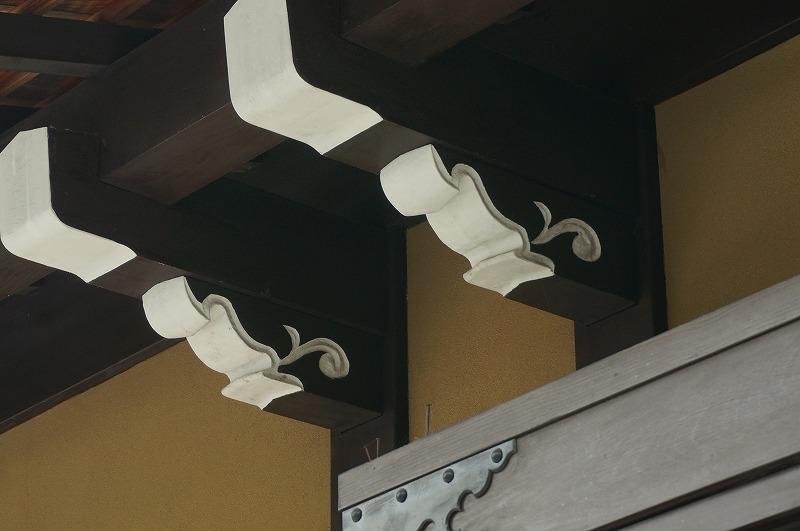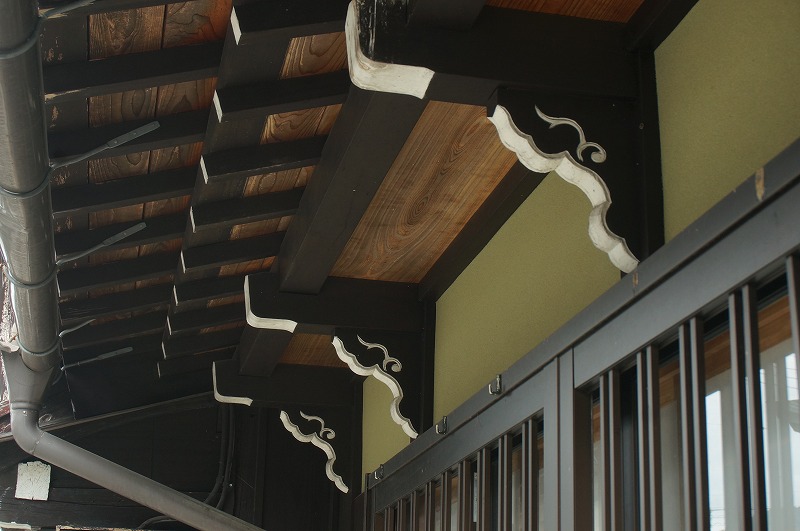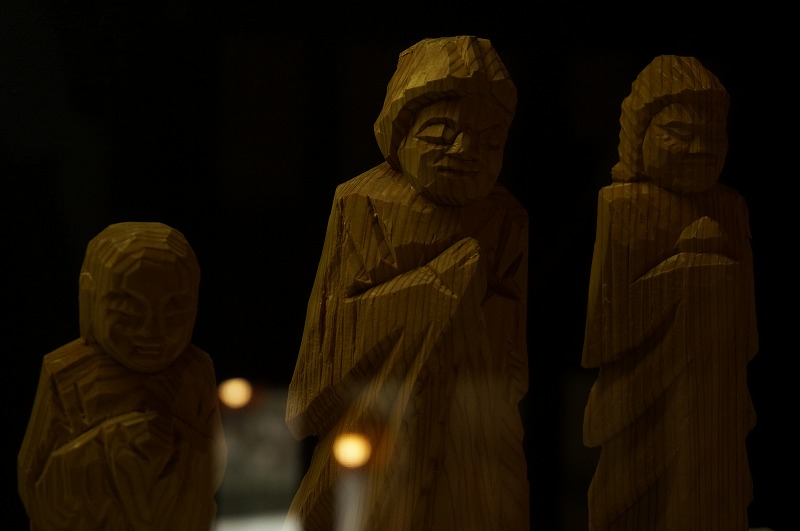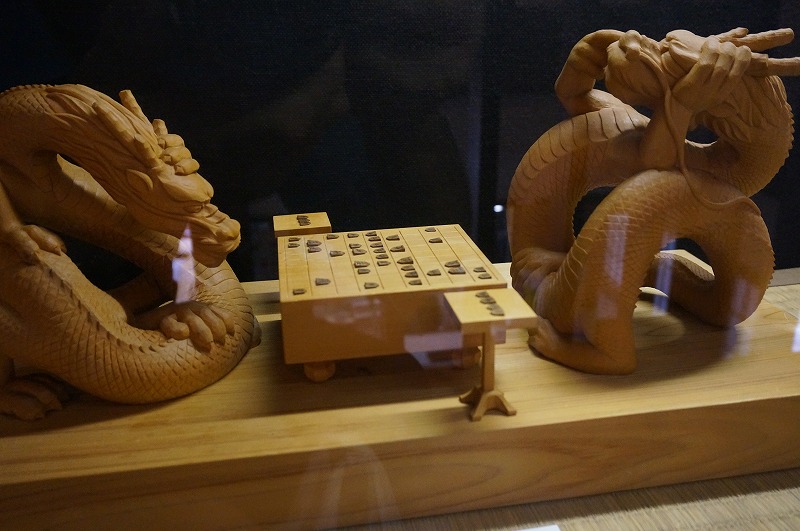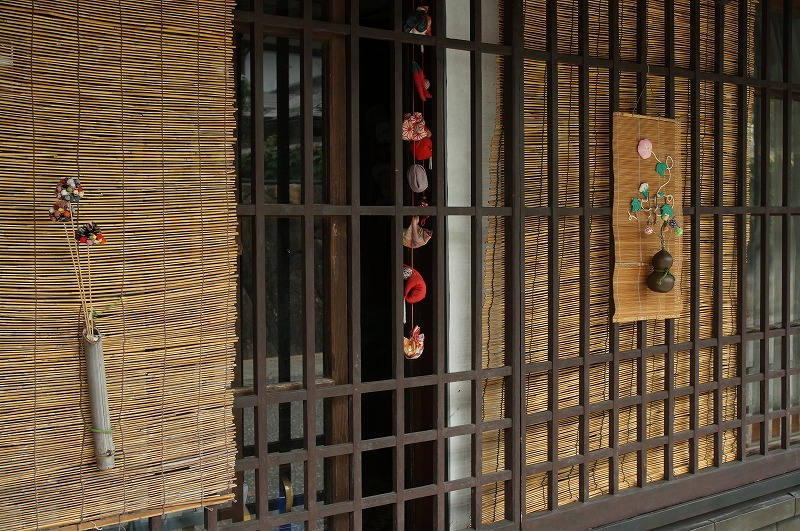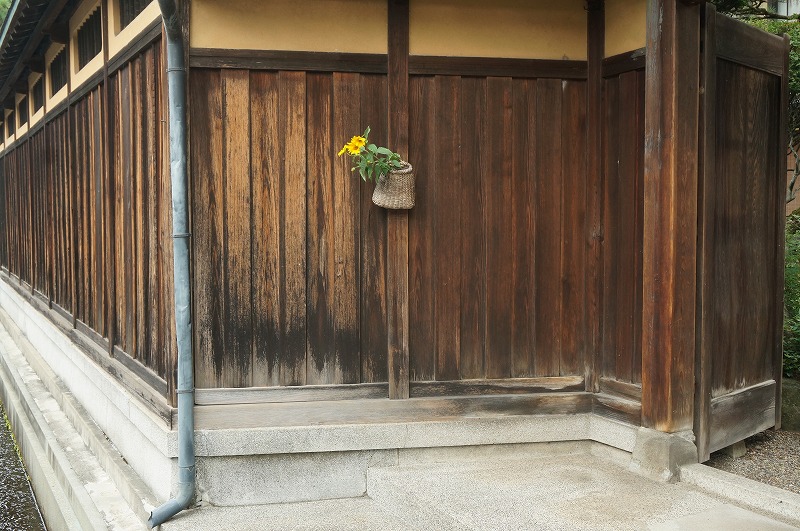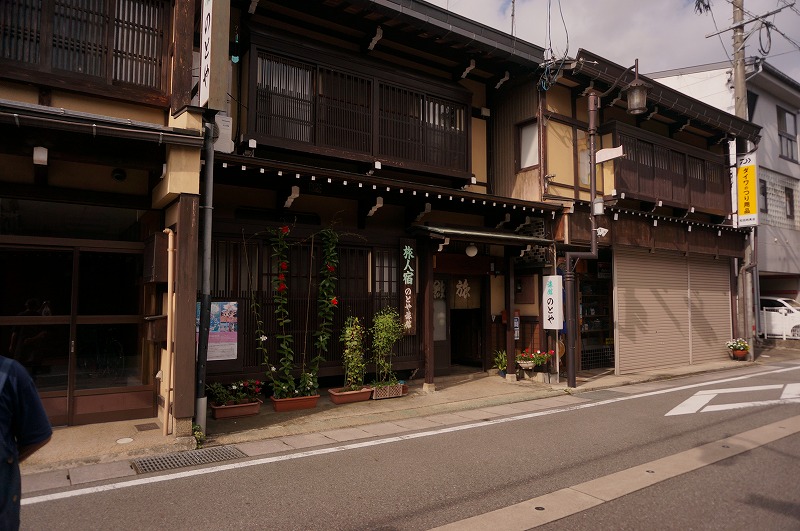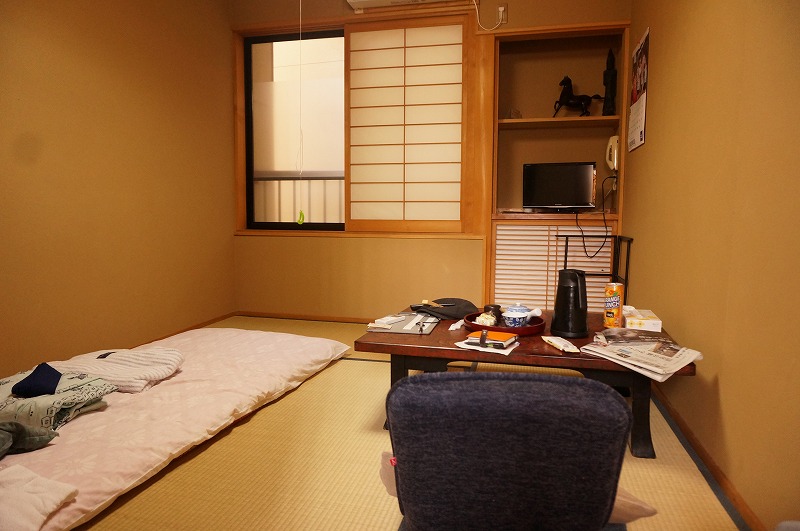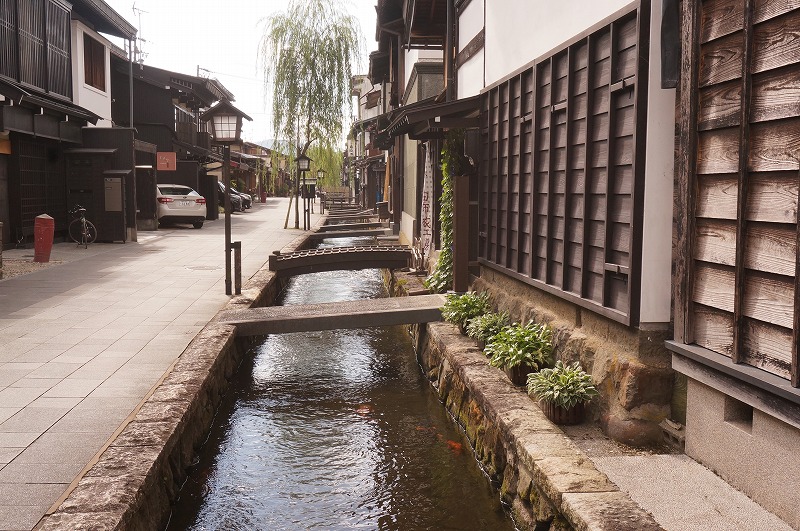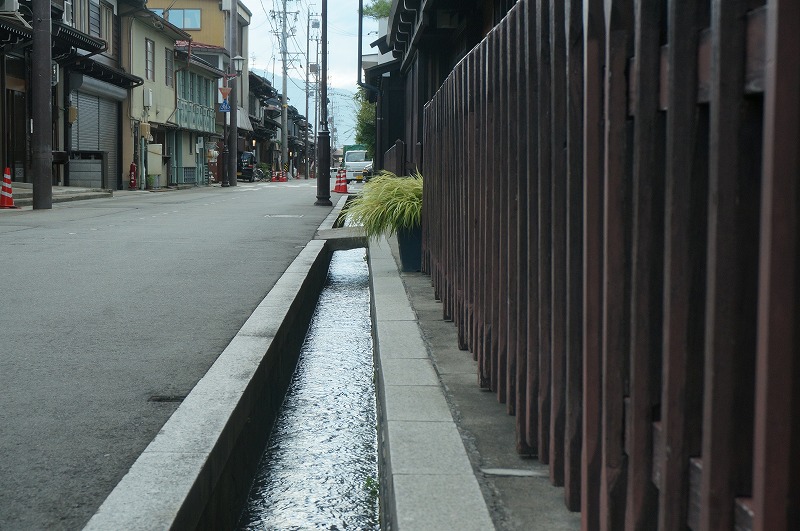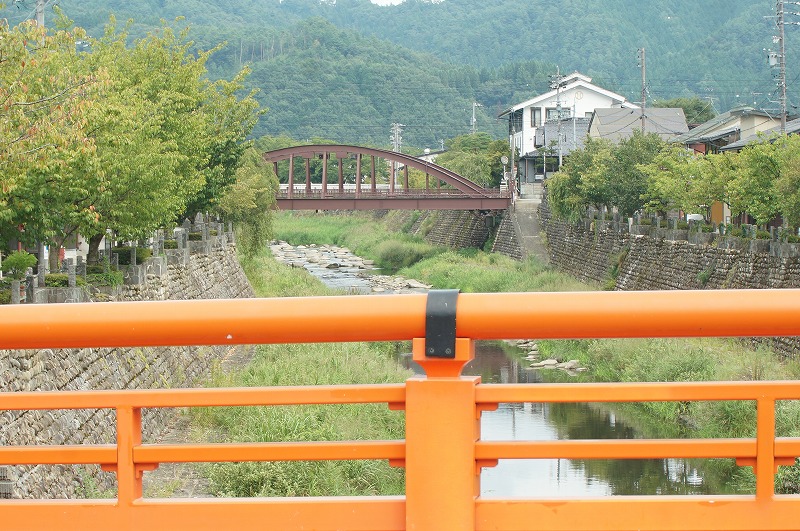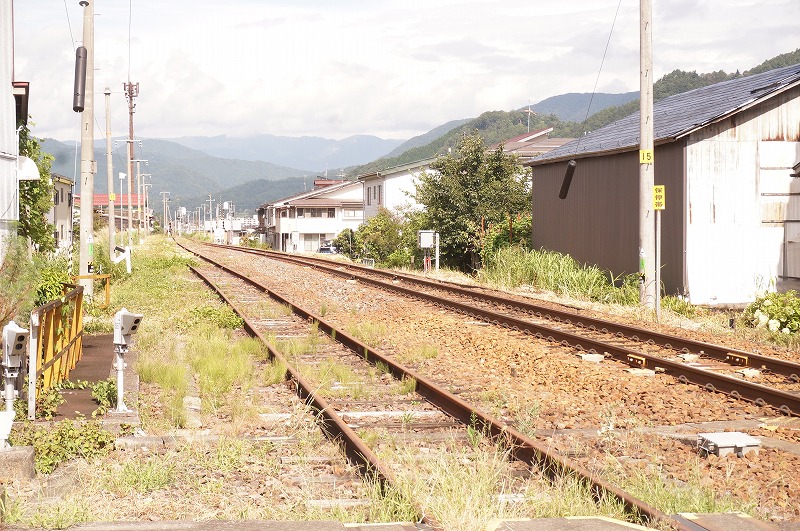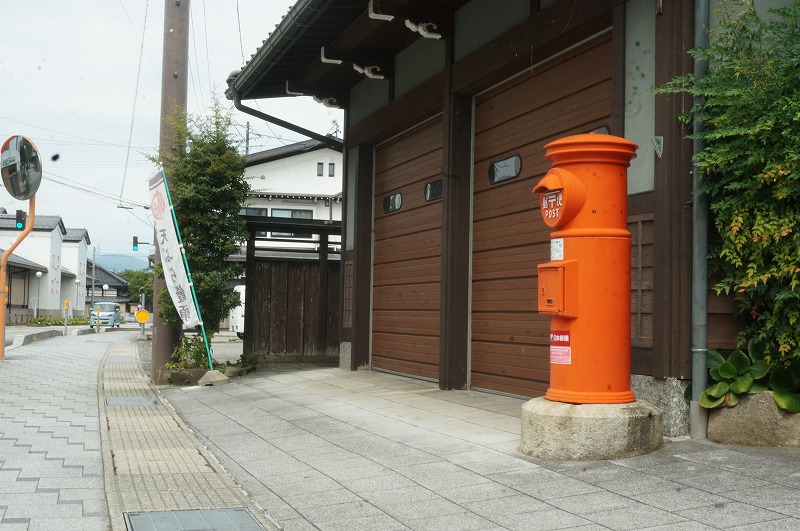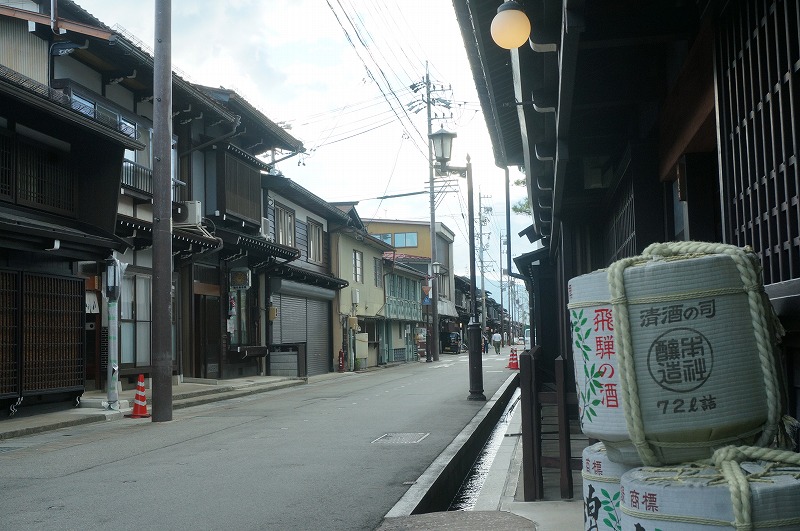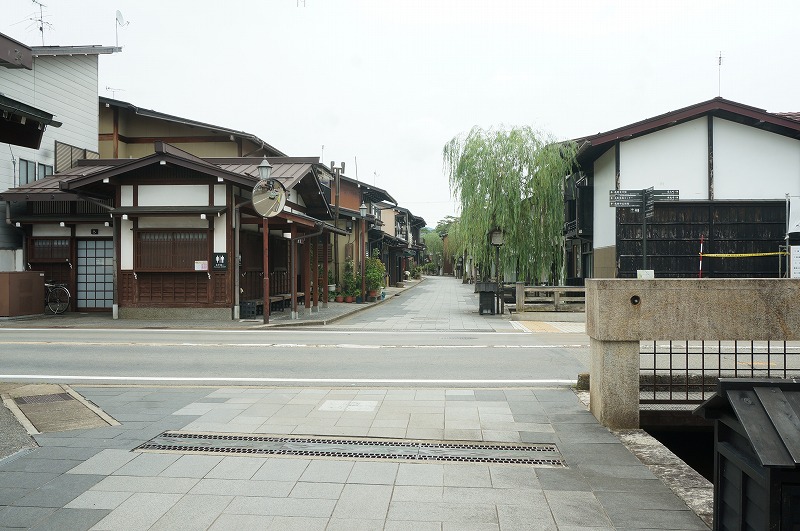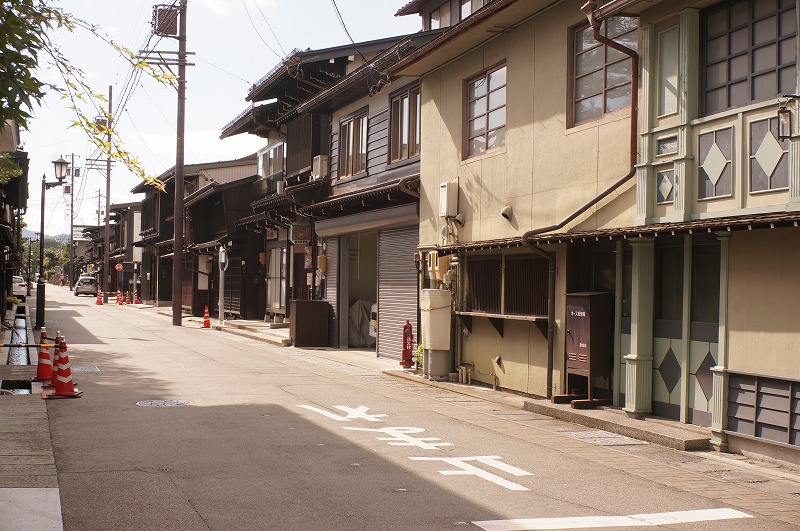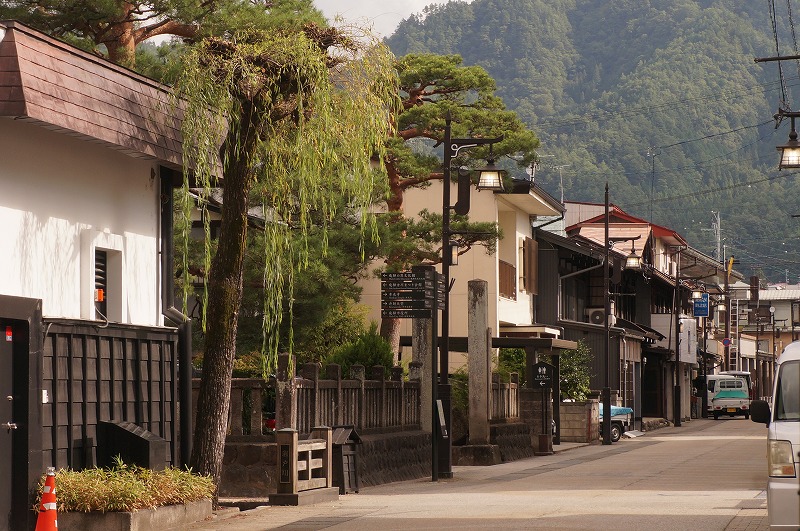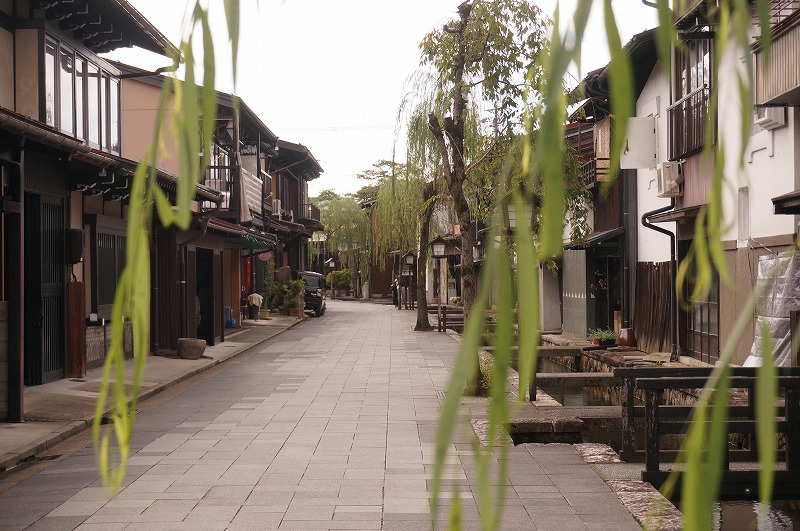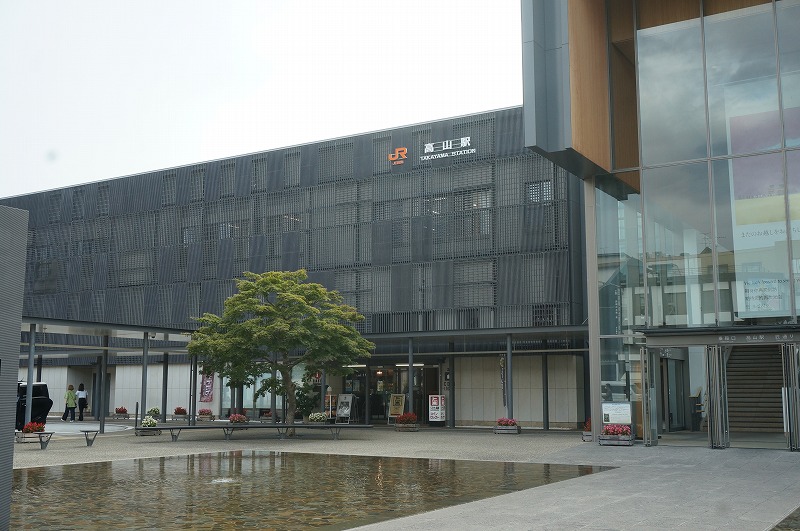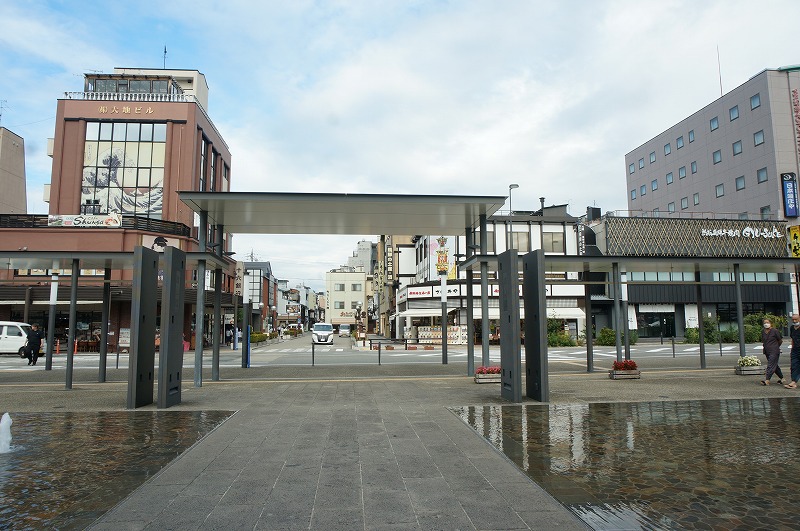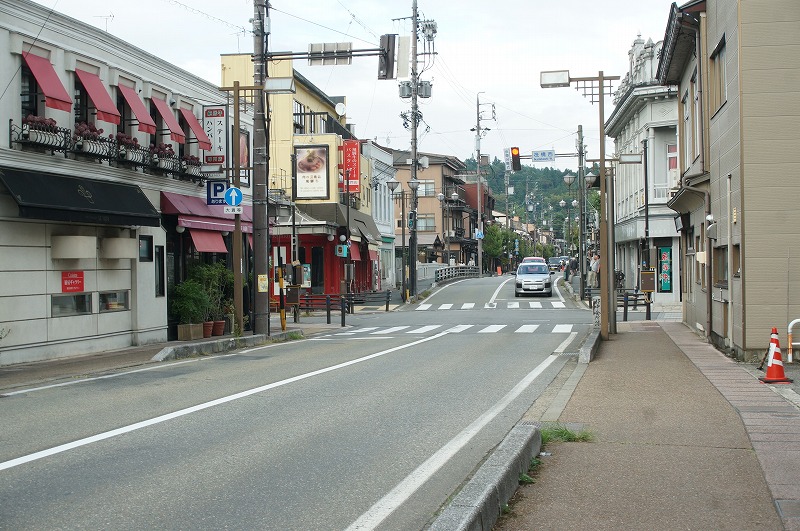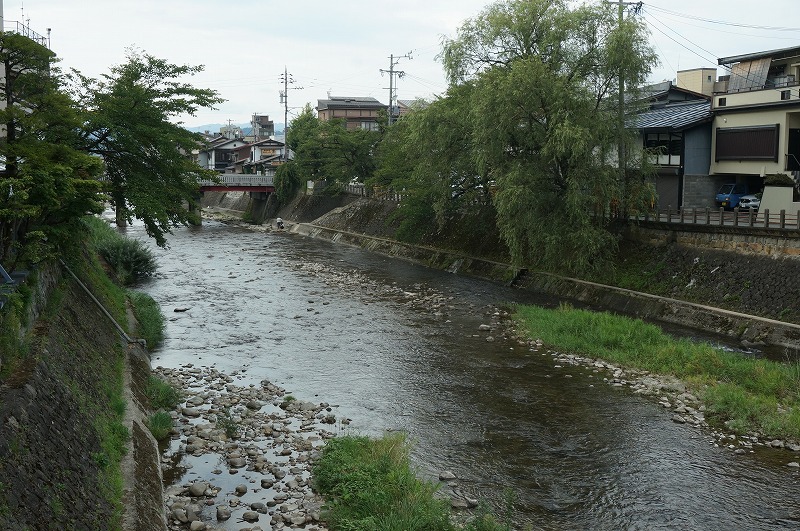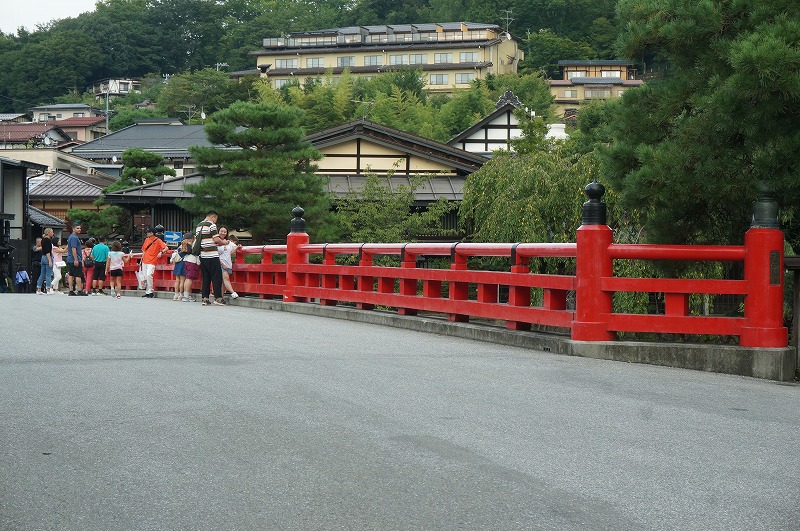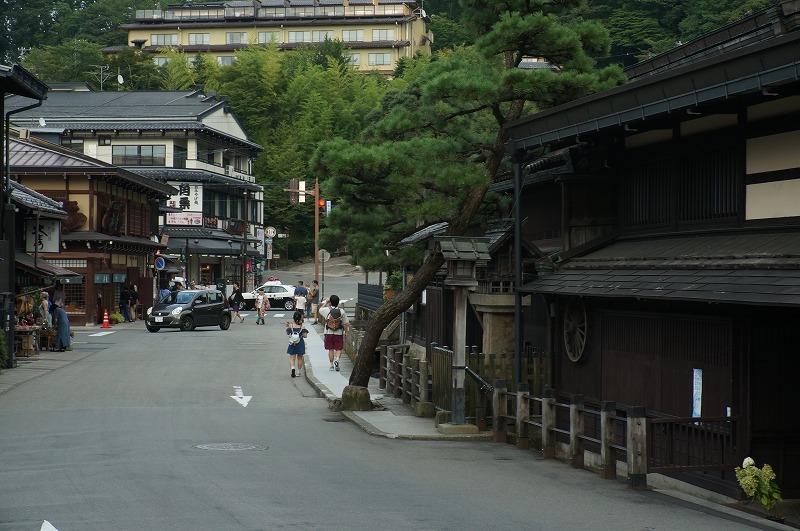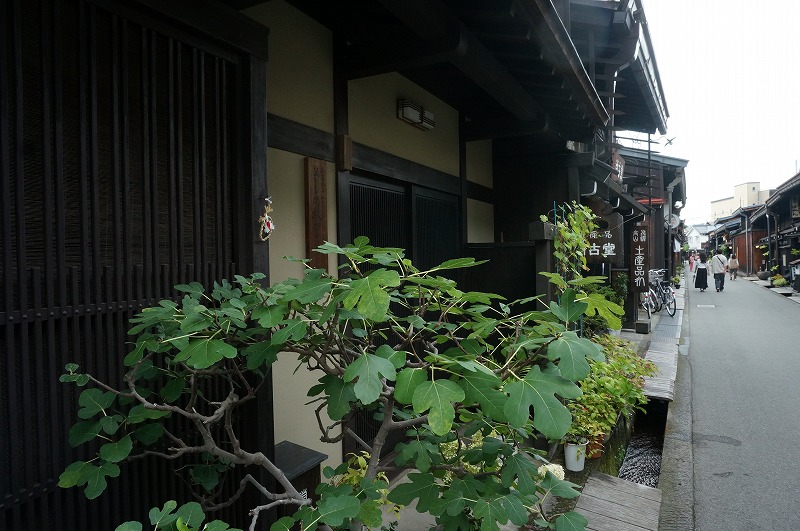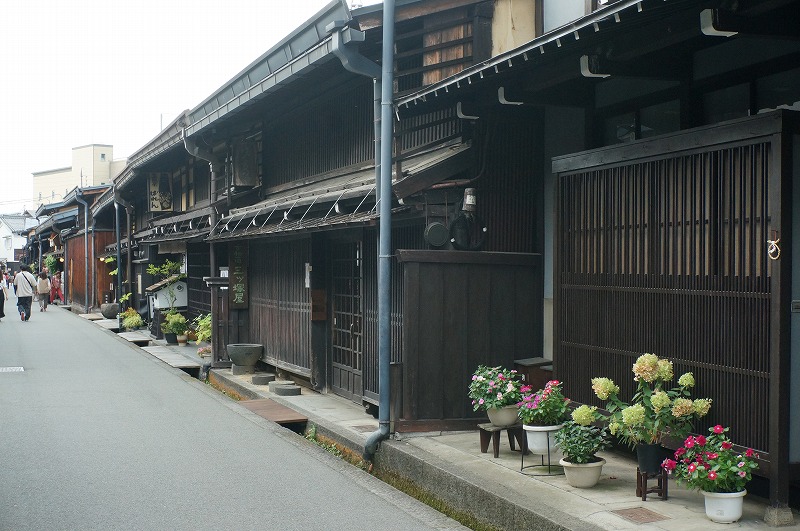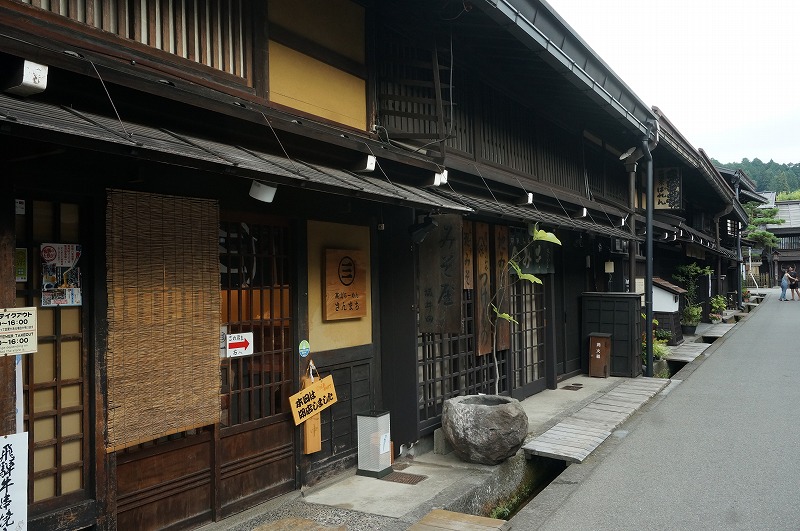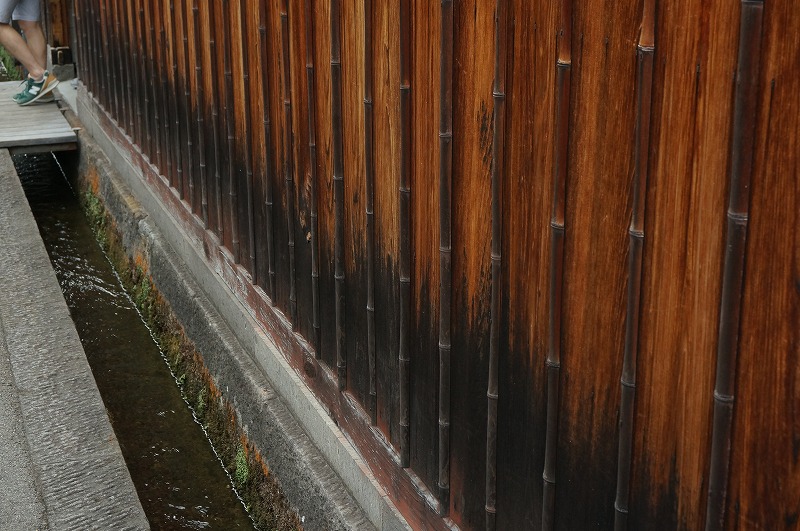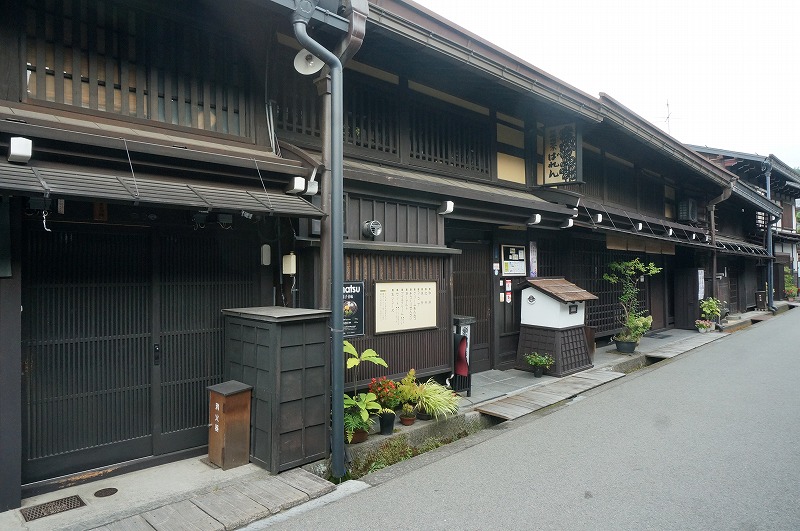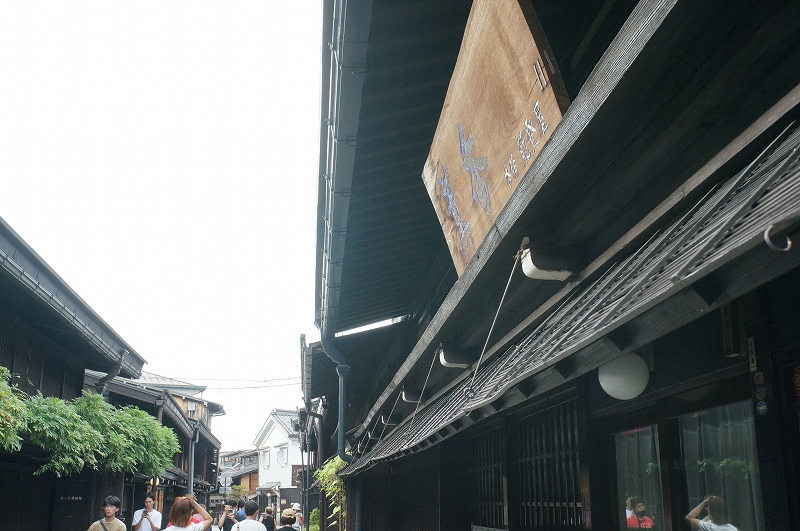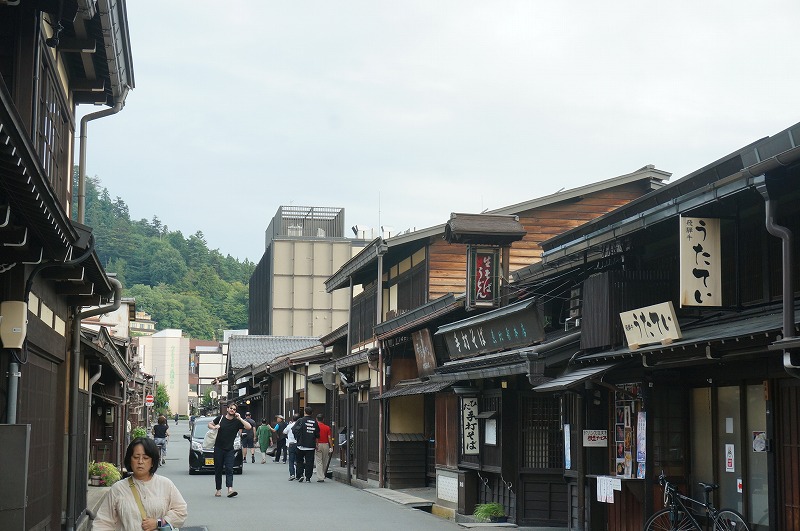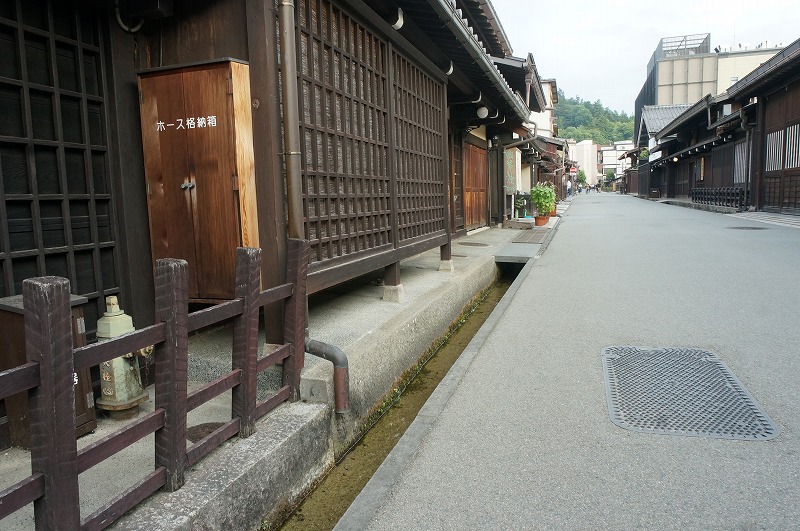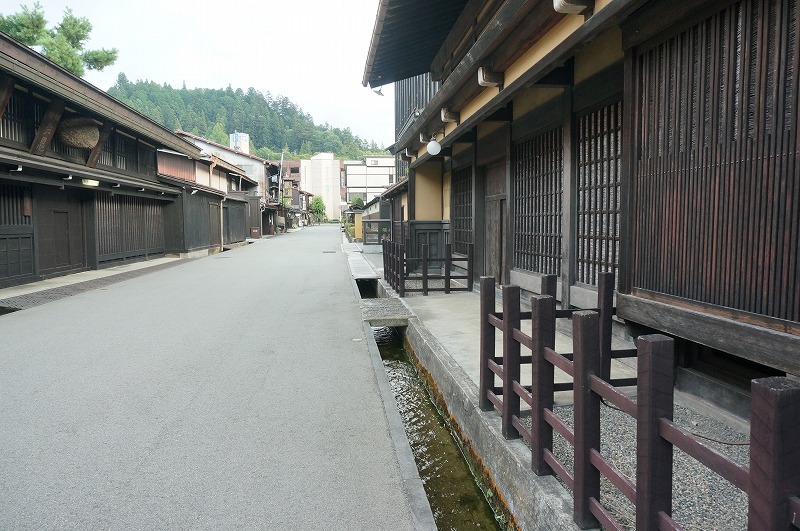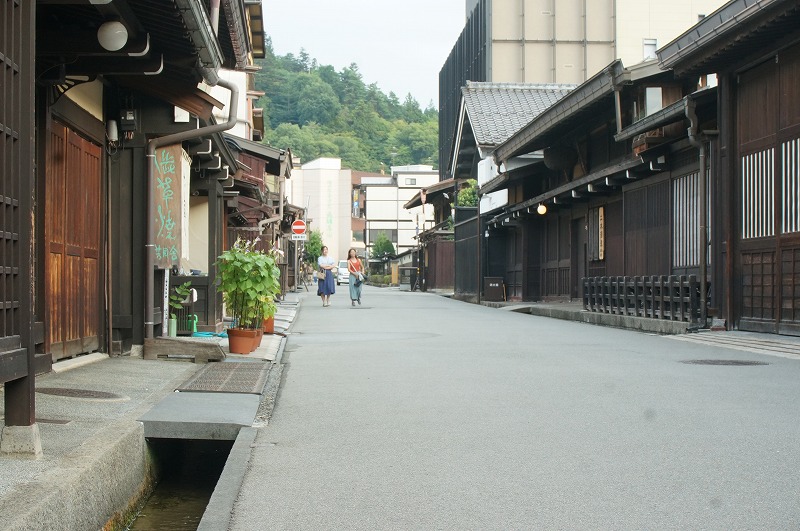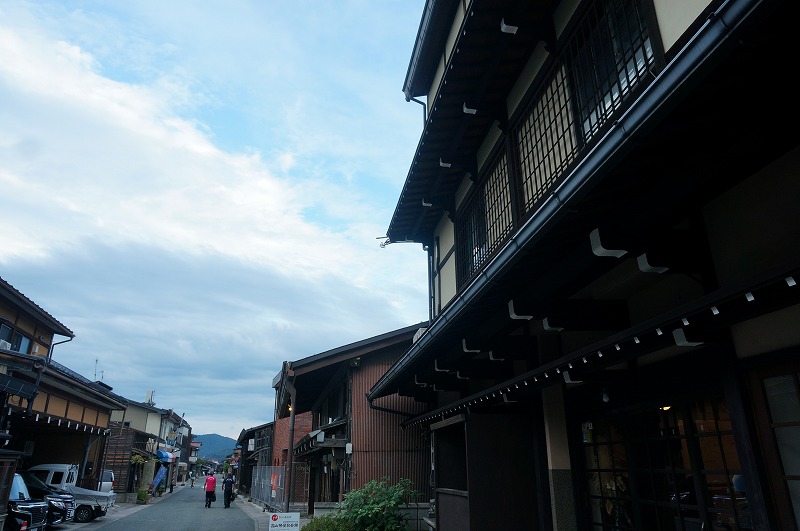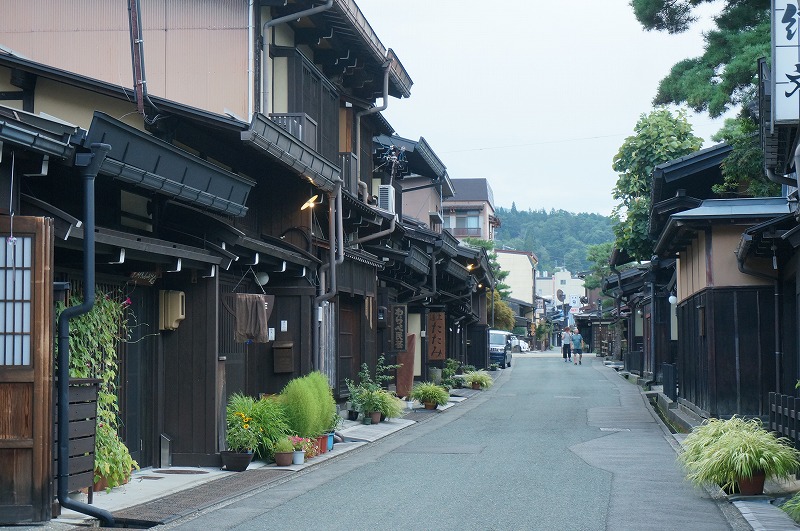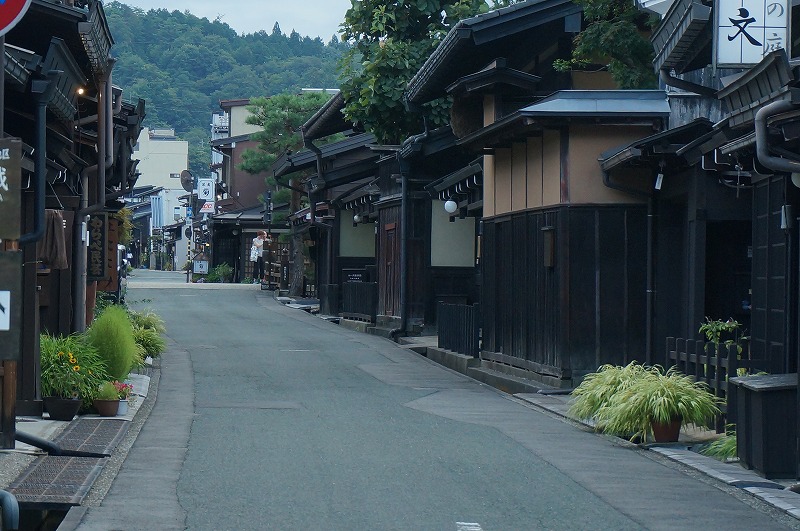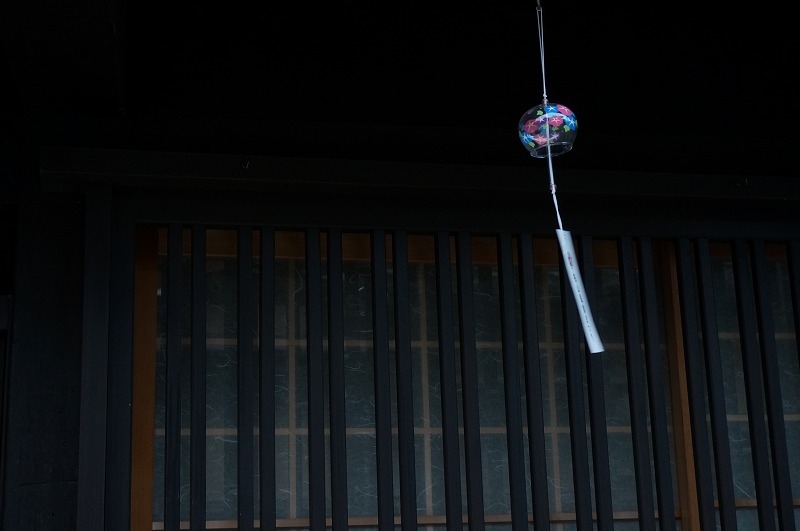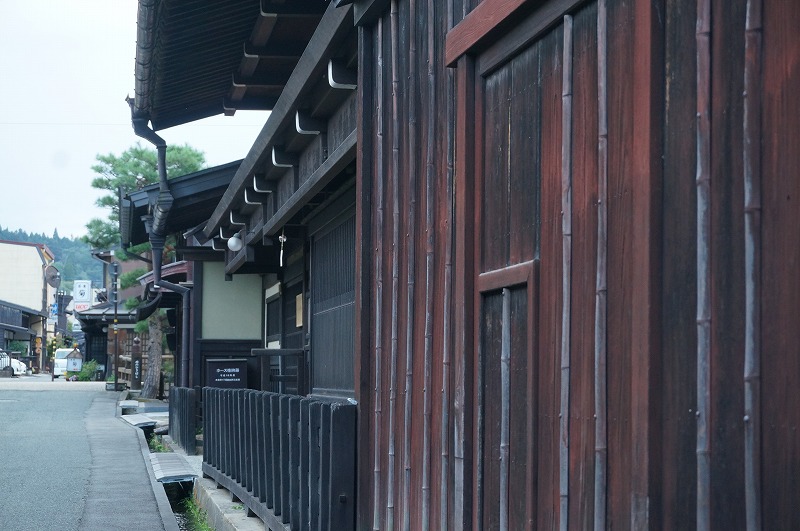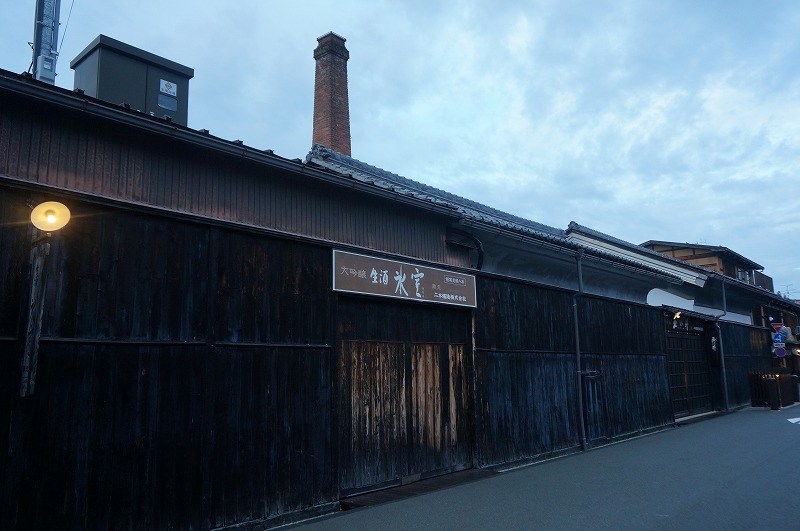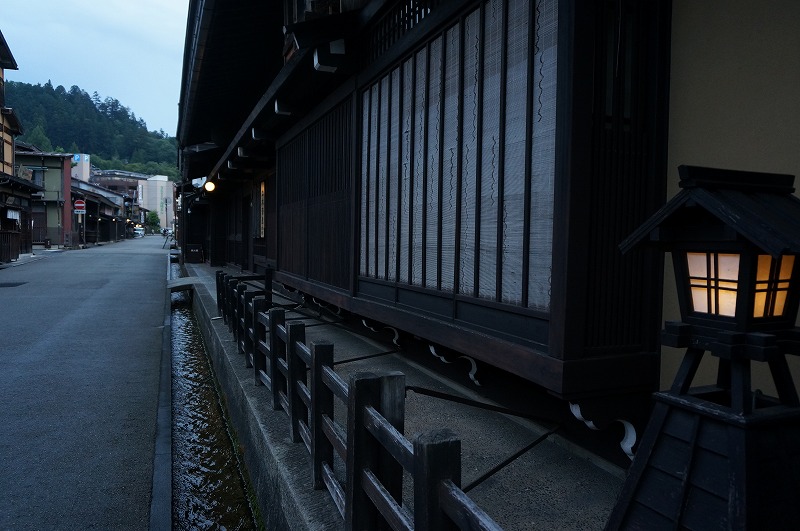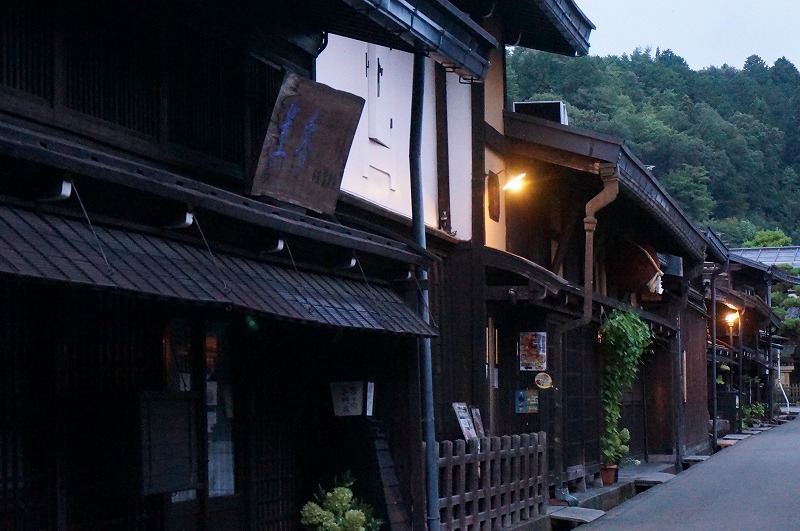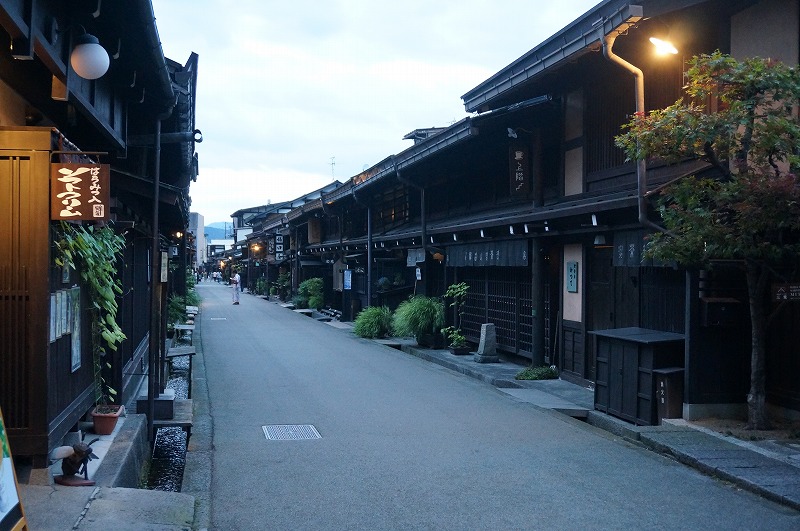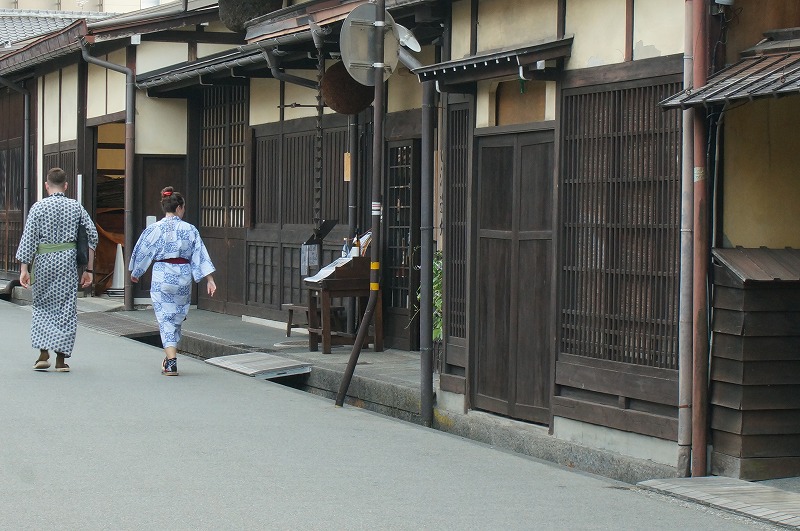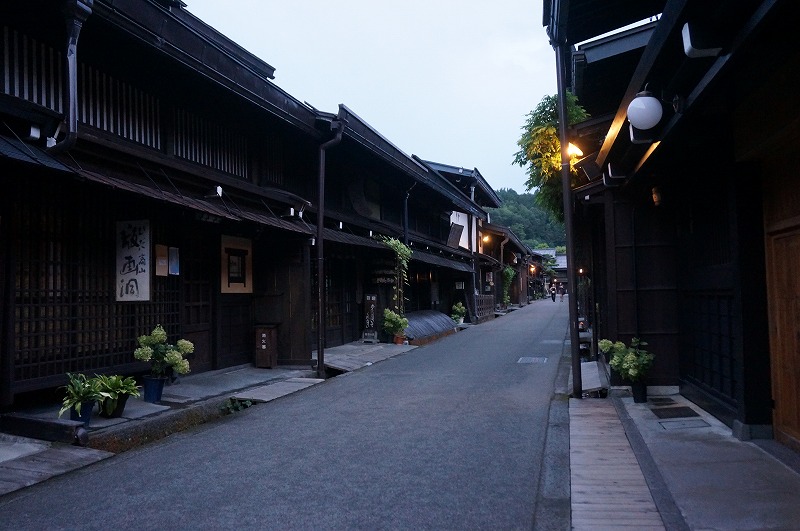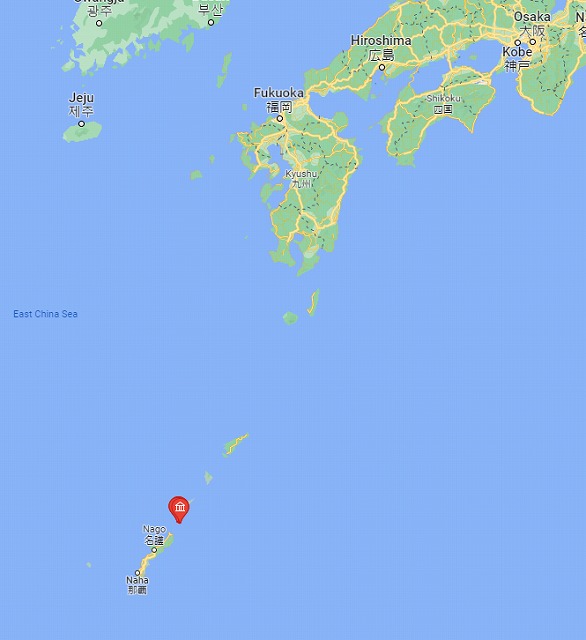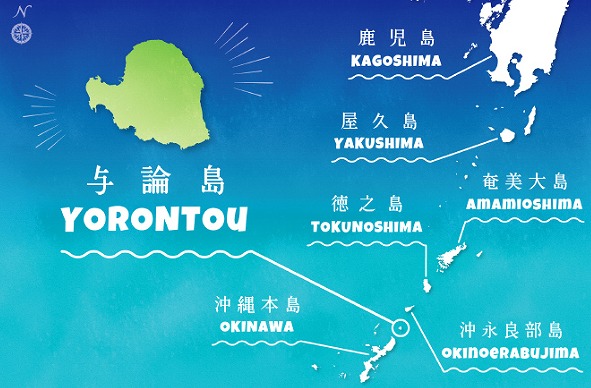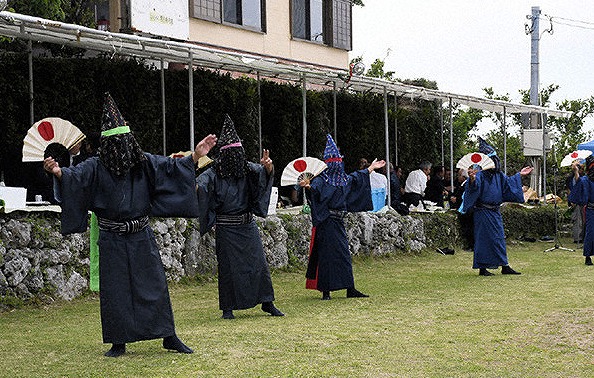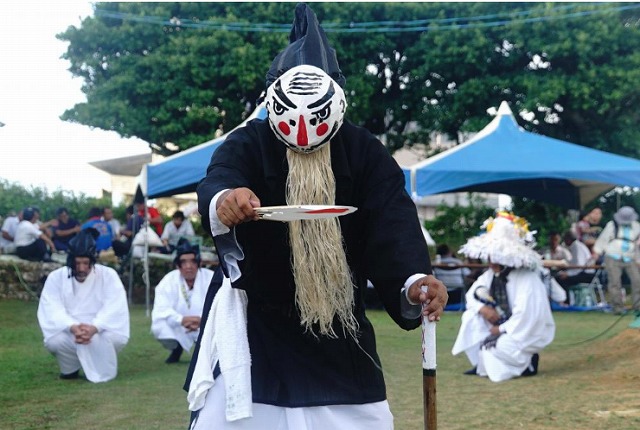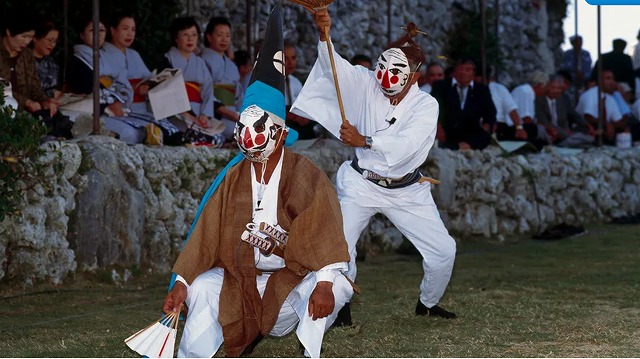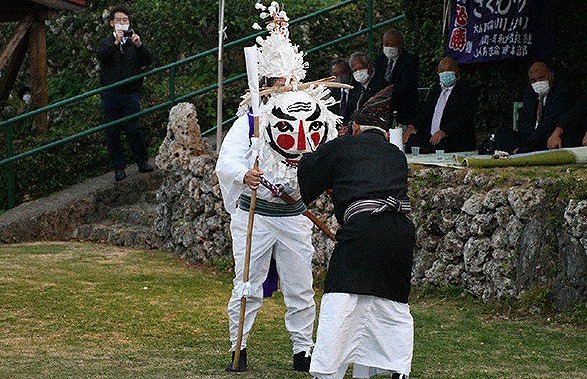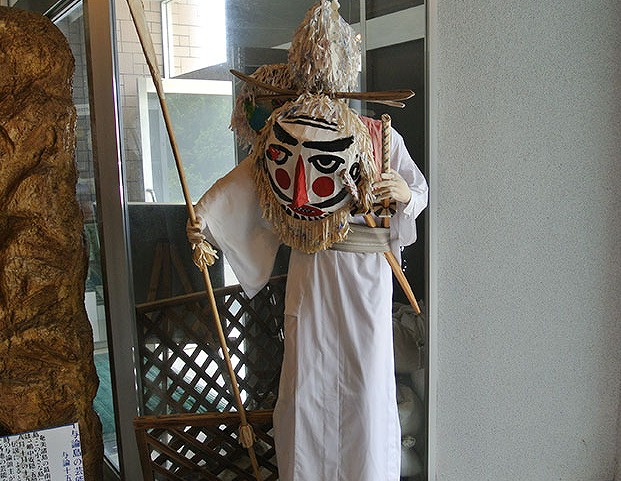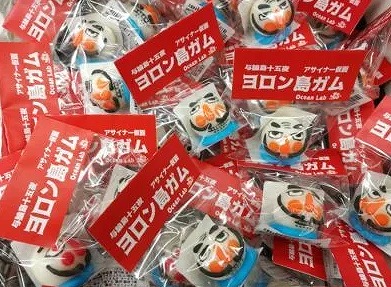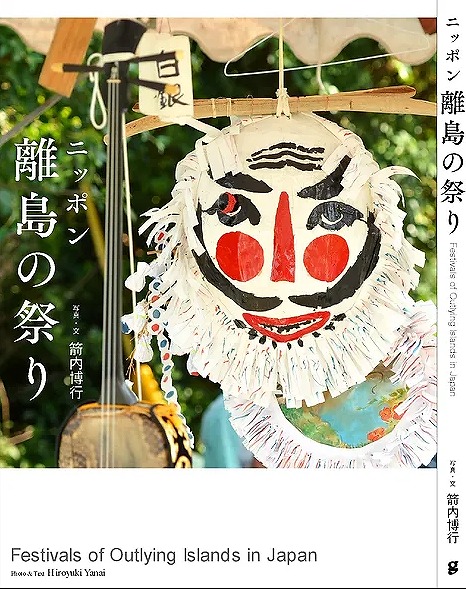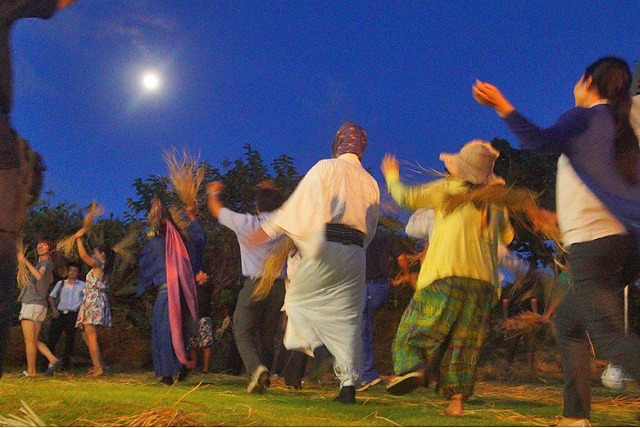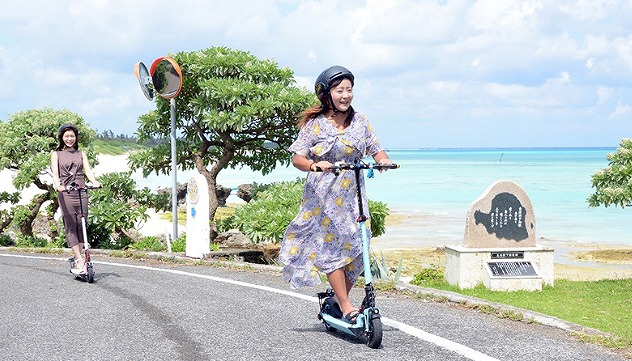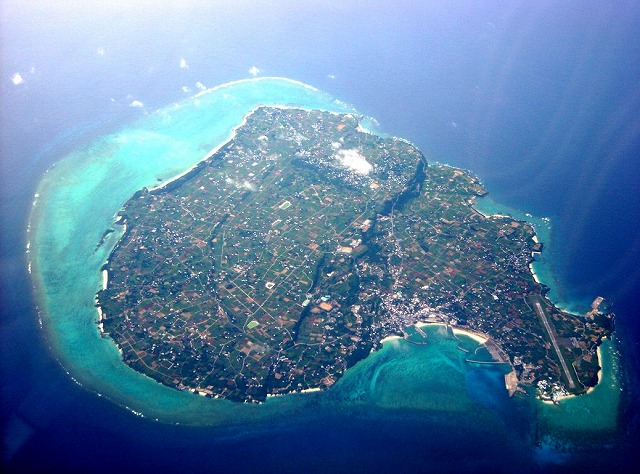Oni dance in a mountain village~ Hana-matsuri


This time it is set in Aichi Prefecture. Aichi Prefecture is a region centered around Nagoya and is geographically located in the middle of Osaka and Tokyo. Nagoya is also the home of Toyota, a famous car manufacturer. Most of Japan is covered by mountains, so if you leave the coastal plain, it becomes a mountainous area. Aichi Prefecture is no exception. The northern part of Aichi Prefecture, bordering Shizuoka Prefecture to the east and Nagano Prefecture to the north, is particularly mountainous. Because there are such places, old performing arts often remain as they are. One of them is “Hana-matsuri ” 花祭り”. In the past, this festival (which has a history of about 700 years) used to take a month to hold. But, this was too expensive, so people shortened it to three days, and now they do it in a single day. However, there are many areas where the festival continues from noon to noon the next day. Currently, residents of 15 locations in this district continue to participate.
Because of its location, transportation access is very poor. All festivals are held on top of the mountain and far from the station. This area belongs to Shinshiro City. The population of Shinshiro City is approximately 50,000. Forty thousand of them live at the foot of the mountain.
Festivals cost money. The enthusiasm of the locals is strong, but it is not enough to keep the festival afloat. For this reason, a tour bus has recently started to operate from the station at the foot of the mountain only during the period when several festivals are concentrated. Toyotetsu Sightseeing has also begun to offer tours. Even with a car, it is dangerous to go to a mountainous sight-seeing area at night. We recommend that those who wish to visit join a such a tour.
“Hanamatsuri” is a festival centered on Oni (ogres). So maybe there used to be a tour like this.
This article is based on the 2018 tour.
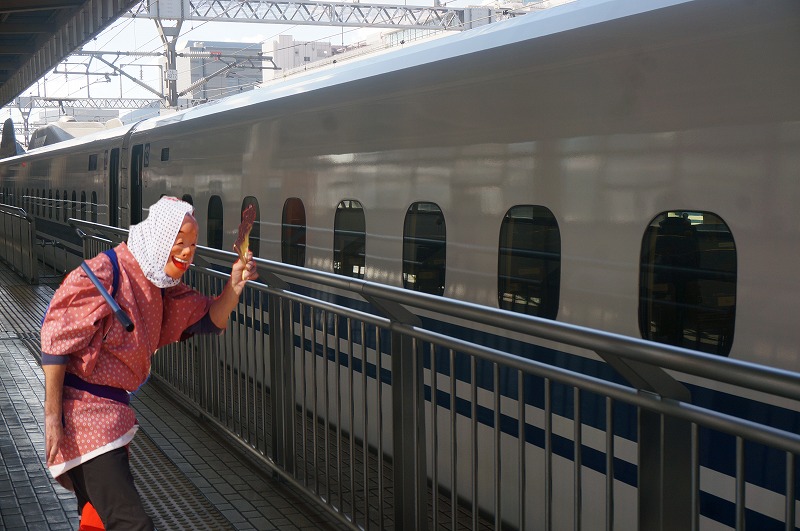
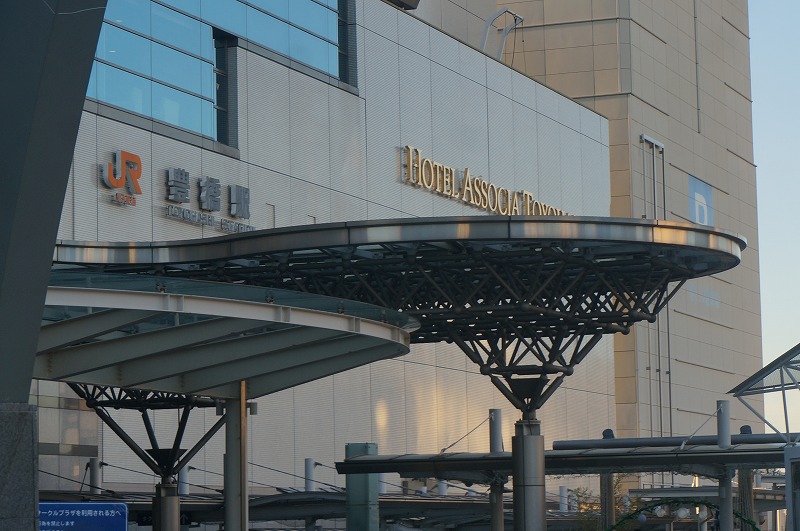
Hello everyone, are you all here? Thank you for joining us on this “Hana Matsuri” tour. This time, you will visit a festival in the Sakauba 坂宇場 area. This tour is perfect for those Oni who are tired of being pelted with beans and exterminated on a daily basis.
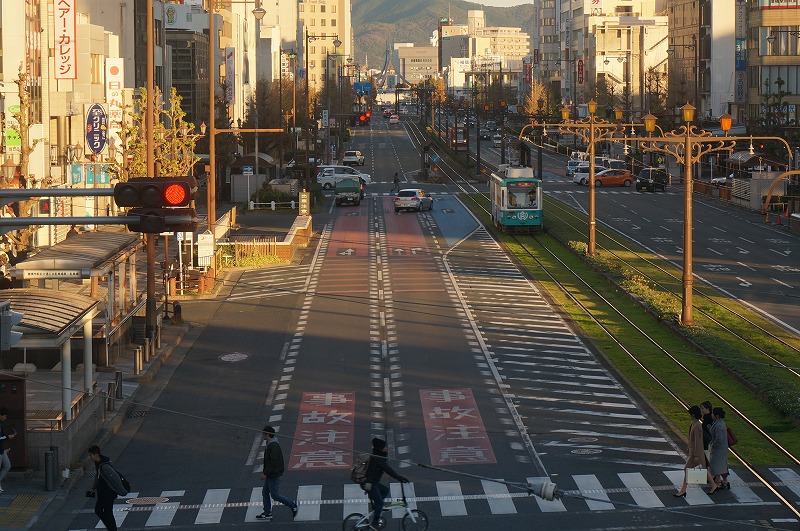
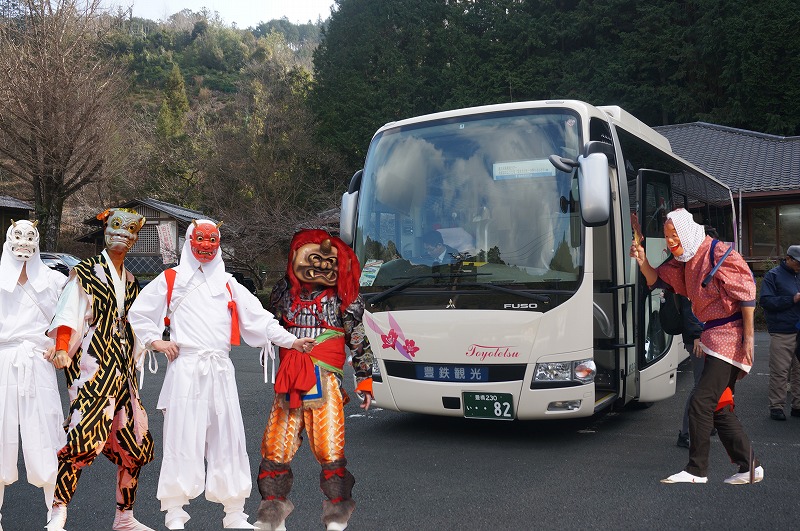
Although the place we are about to visit is administratively part of Shinshiro 新城 City, more than 40,000 of Shinshiro City’s population of approximately 50,000 live at the foot of the mountain.
It takes about 4 hours with a stop at a roadside station along the way.
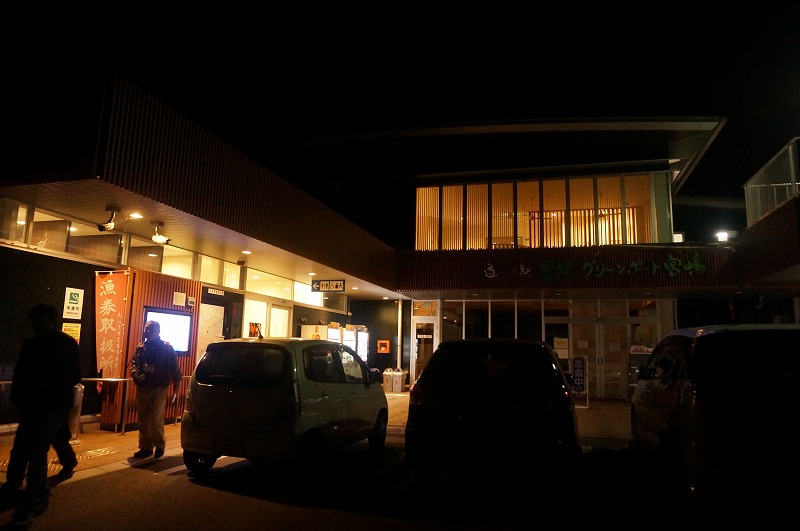
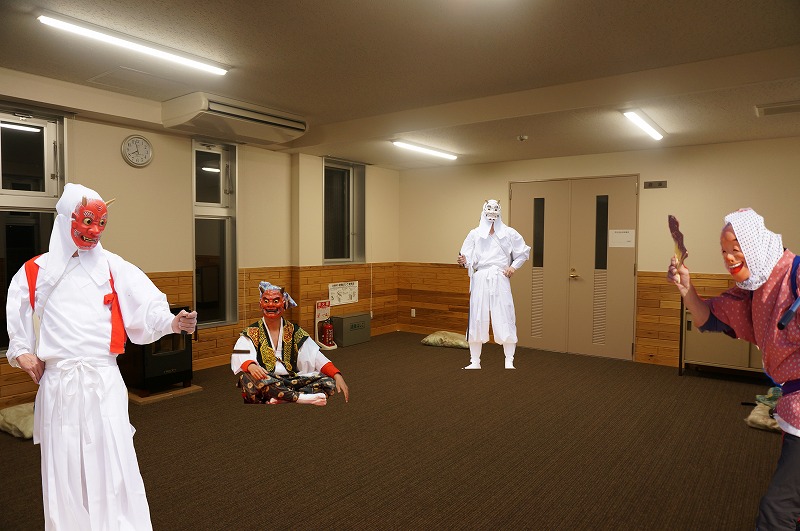
Well, we’ve arrived. It’s already 8:00 PM. You will see the festival here until next morning. It’s a long night, so if you are tired, you can take a rest in the resting room here. It is a roadside station during the daytime, but we rent it only during the nighttime, so please make yourselves at home. Now, let me take you to the festival site.
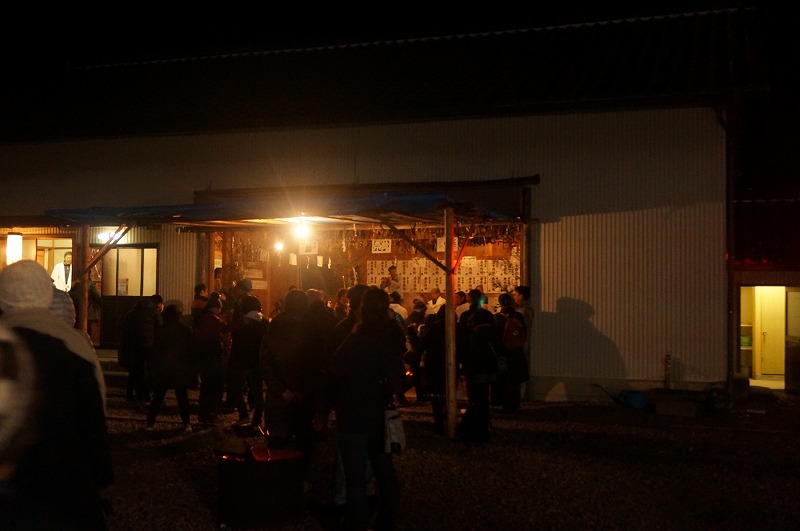
Tehohe Tehohe, Tewotole Tole
Oh, I’ve heard this sound before. It’s a shout unique to the Hana-Matsuri.
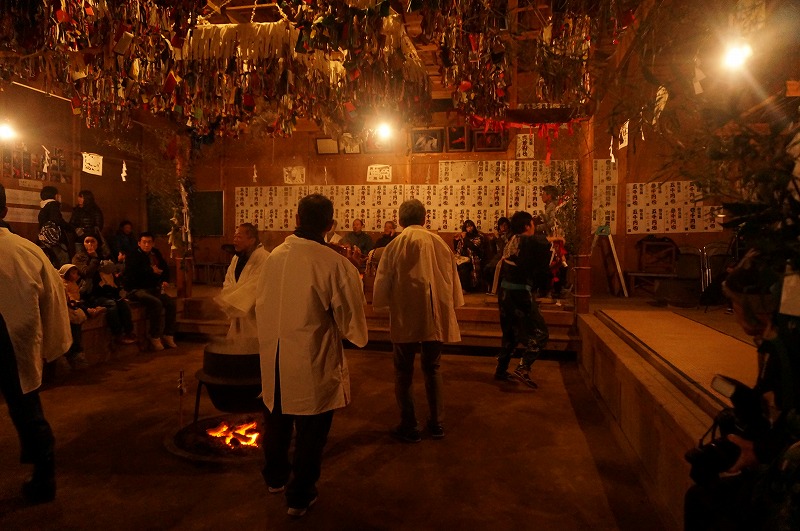
Let’s go inside.
First, in the center is a large cauldron, the symbol of the festival, where the water boils all night long. This place is called “maido. It means a stage for dancing.
In front of the “maido” is a drummer. This drum sets the rhythm for the whole thing. Also, there are various decorations hanging from the ceiling. These are the gods’ Spirit-dwelling object. On the wall are the names and amounts of those who donated. Please be assured. The donation is included in the price of this tour.
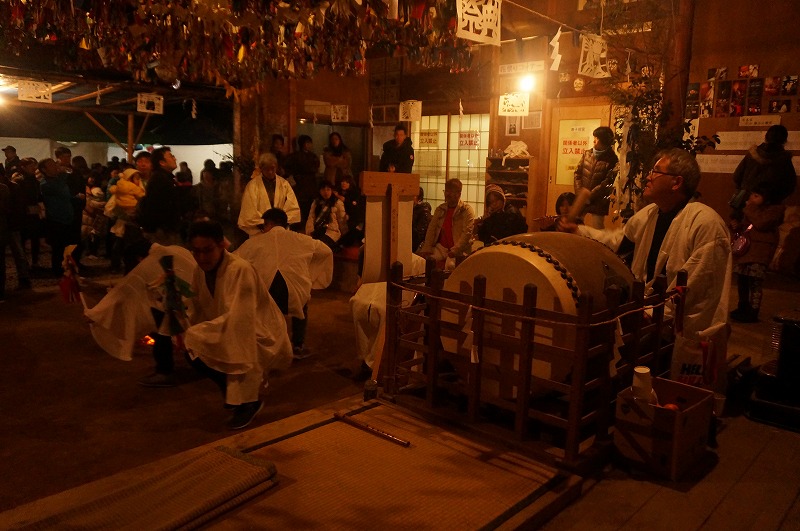
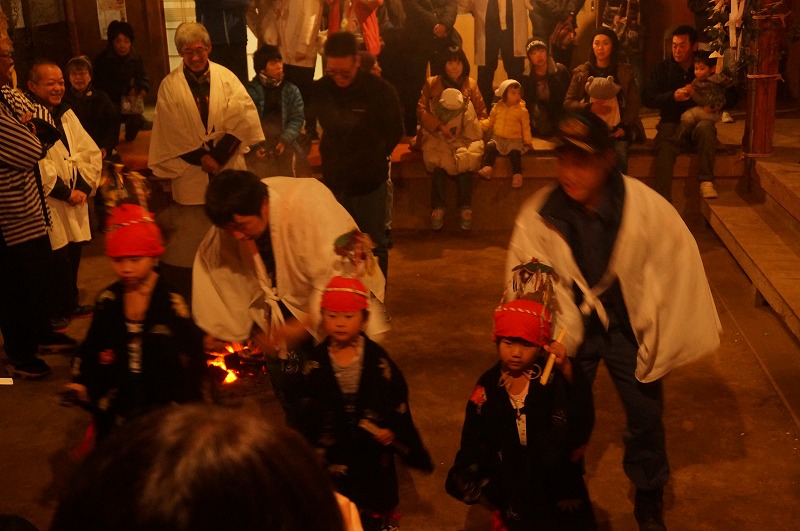
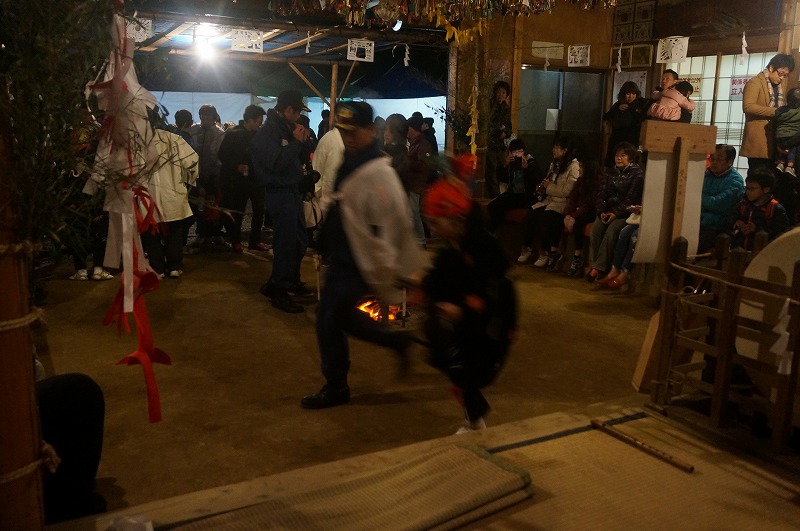
There are several types of dances, which gradually increase in age and proficiency from children, boys and girls, to young men and women. You can see the complexity of the dances gradually increase.
Adults accompany each child. I wonder if this is how they learn all the time.
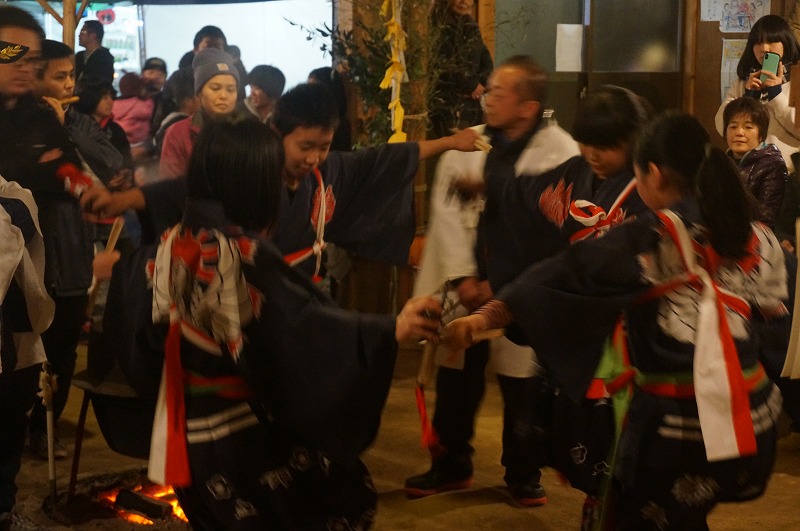
Isn’t everyone cold? There is a brazier in the front seats of the stage, though. It gets below 0 degrees Celsius at midnight, so please be careful not to catch a cold. Or, please warm up in the break room mentioned earlier.
Hi, I bought a warm Chinese bun outside.
Sounds good. I’ll go buy it later.
Light food are sold at cheap prices outside.
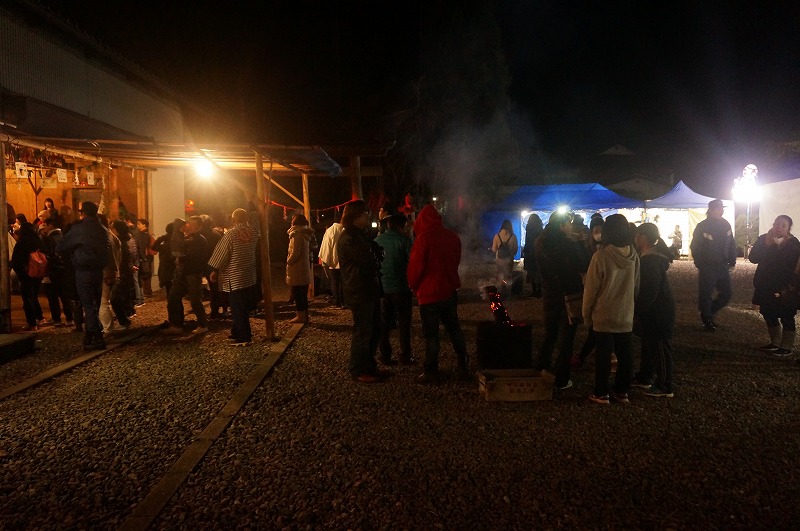

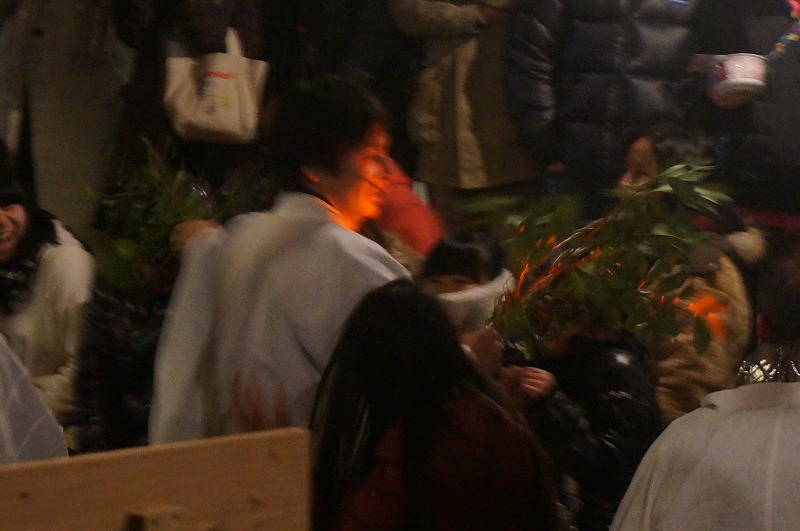
We see a man holding a sakaki tree. Since ancient times, sakaki has been famous as a tree in which God dwells. It is said that if you are struck with it, you will be free from disease. By all means, everyone.
I always get hit with beans on Setsubun. Besides, we Oni are also members of the gods.
It’s already around 11:00 p.m. It’s almost time for the first Oni to make his appearance.
Yamami-Oni 山見鬼
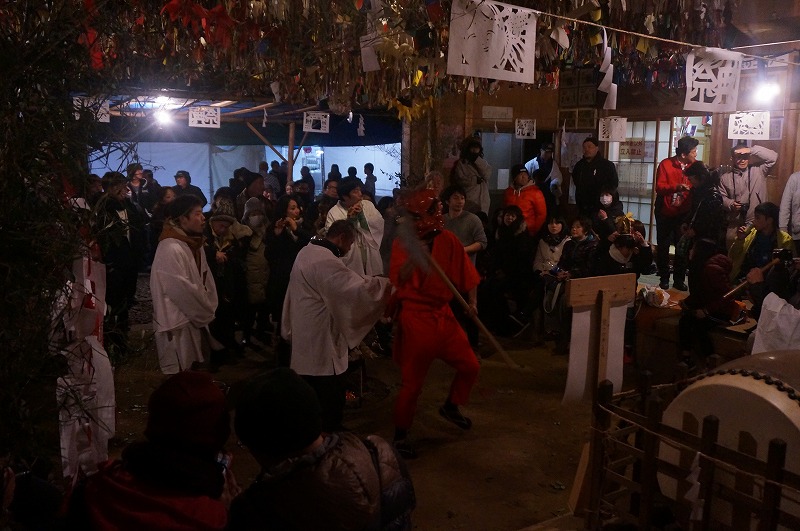
Here it comes at last: the first of the three Oni, the Yamami-oni 山見鬼. This is the companion Oni to the Yamami-oni.
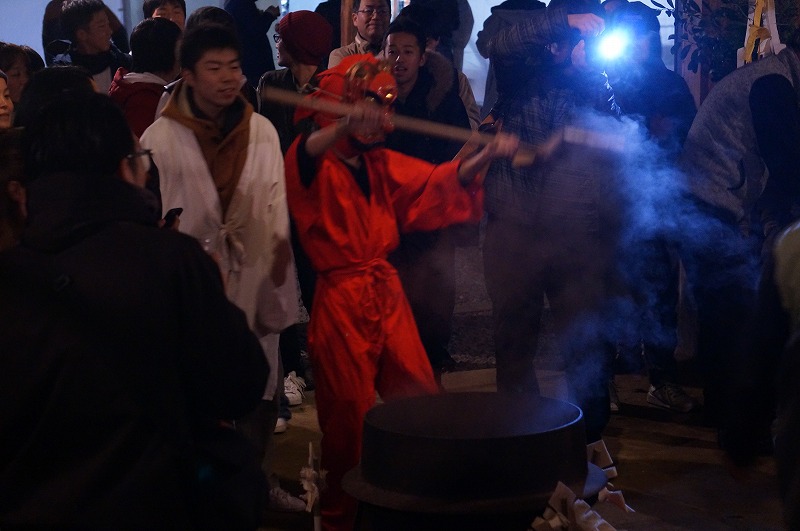
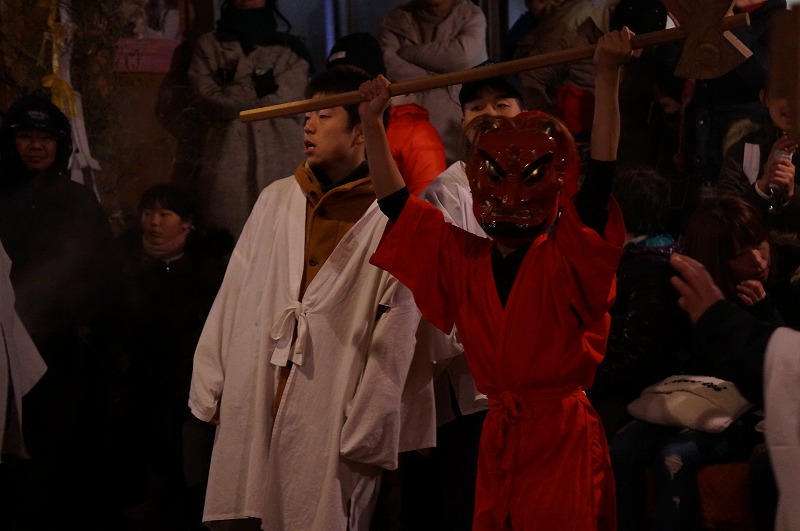
Tehohe, Tehohe,. Tewotole tole
Listening to this melody for a long time puts me into a kind of trance.
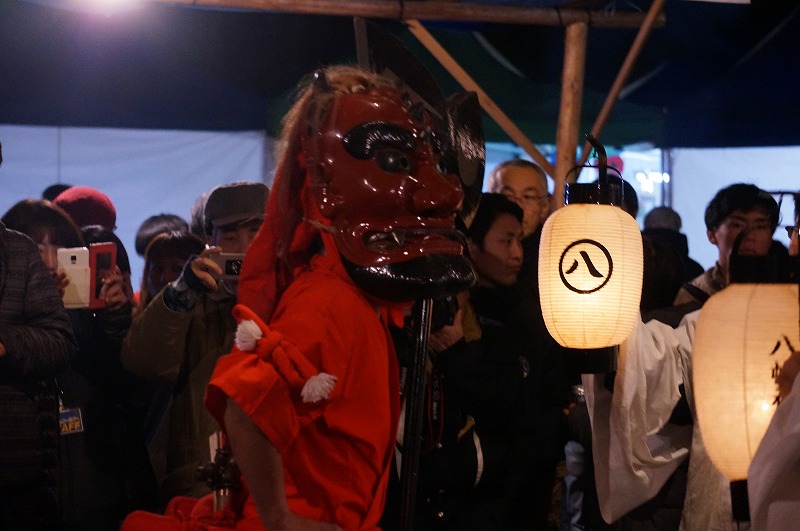
This is Yamami-oni.
He looks magnificent, doesn’t he?
He’s the star of the show.
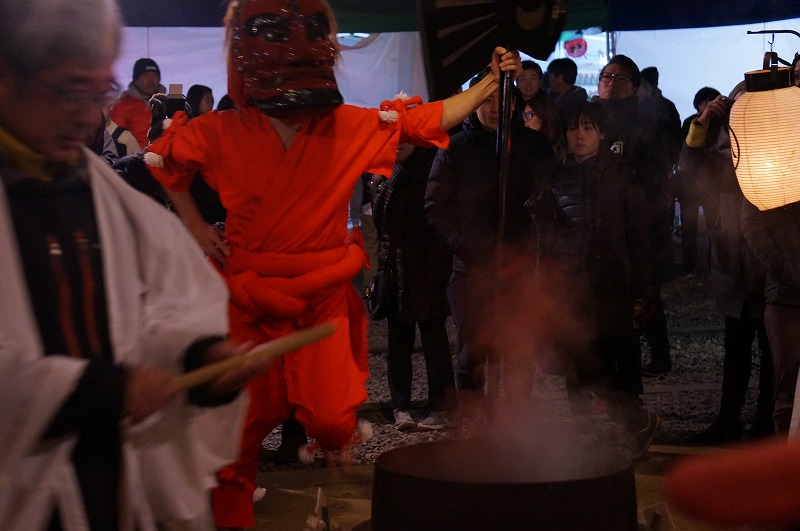
Yamami-oni is an Oni that breaks mountains. They drive away evil spirits with their powerful spells and encourage the rebirth of life by breaking up mountains. He does not actually break anything, but rather swings the hoe he is holding over the hot water pot in a large gesture to dispel the evil spirits.
I have also heard. It seems to have that kind of meaning in winter festivals that wish for rebirth.
Experts say it’s because that’s when the sun’s power is at its weakest.
In the past, this Yamami Oni was the most important Oni.
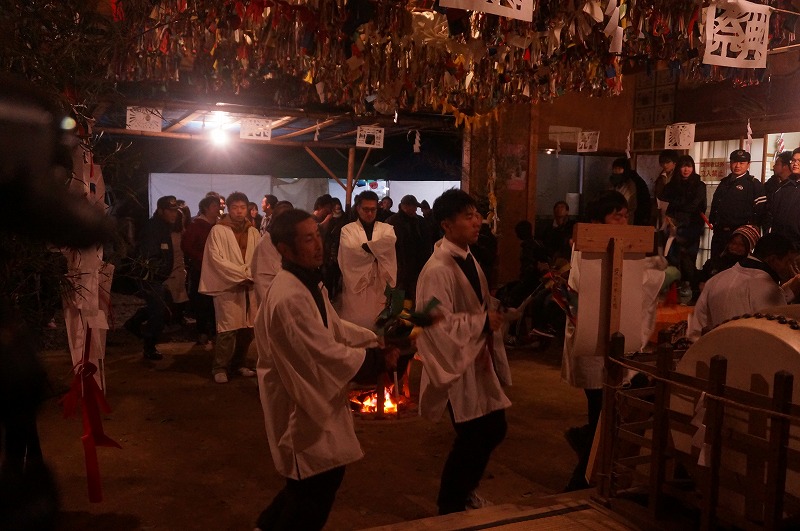
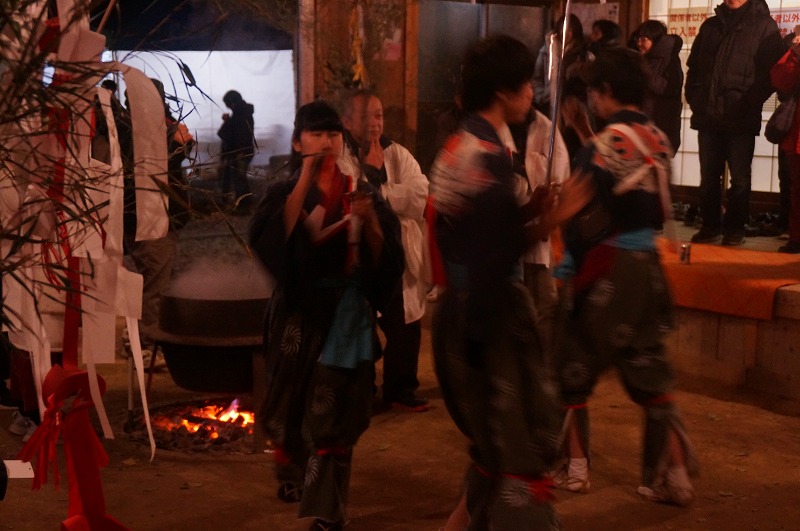
As expected, I started to feel a little sleepy. I’ll sleep a little until the next Oni comes out.
I’ll get some coffee from the vending machine too.
Sakaki-Oni 榊鬼
It was around 3:30 in the morning when the Sakaki Oni, the main character of the Hana Matsuri, made his appearance.
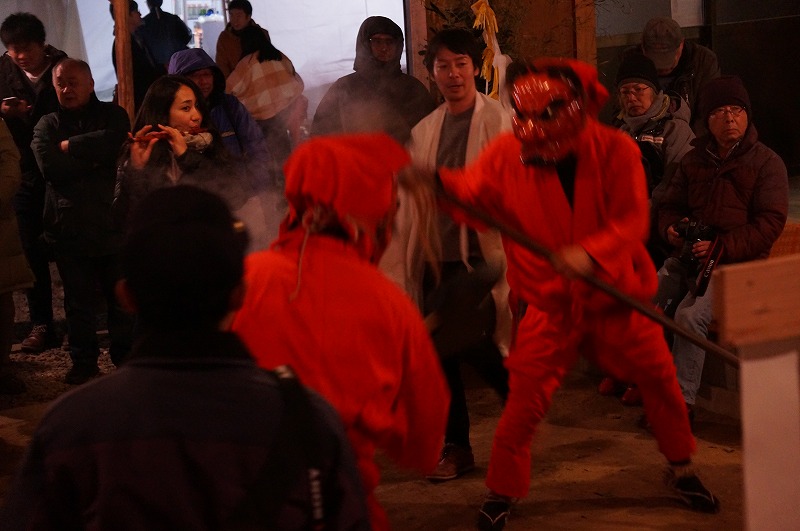
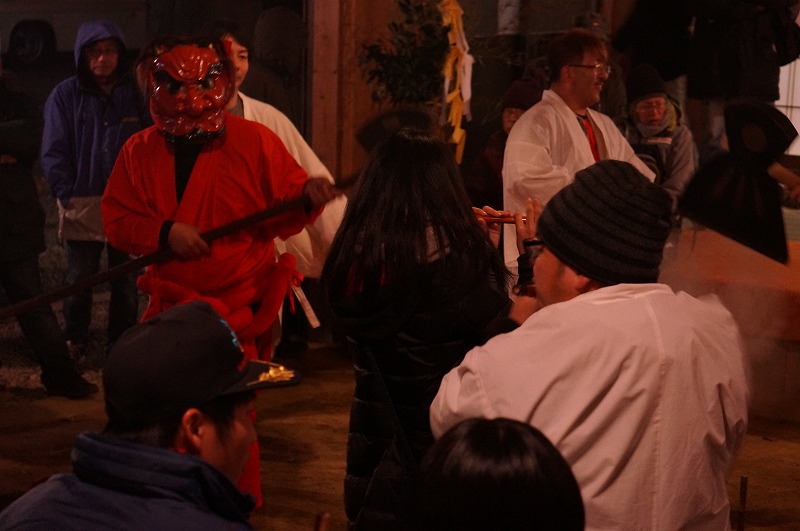
First, the dance of the accompanying Oni enlivens the occasion.
Now, it’s time for the real deal, Sakaki Oni to make his appearance. Oh, there are a few people missing.
It’s past 3 a.m., so some of members are sleeping in the break room.
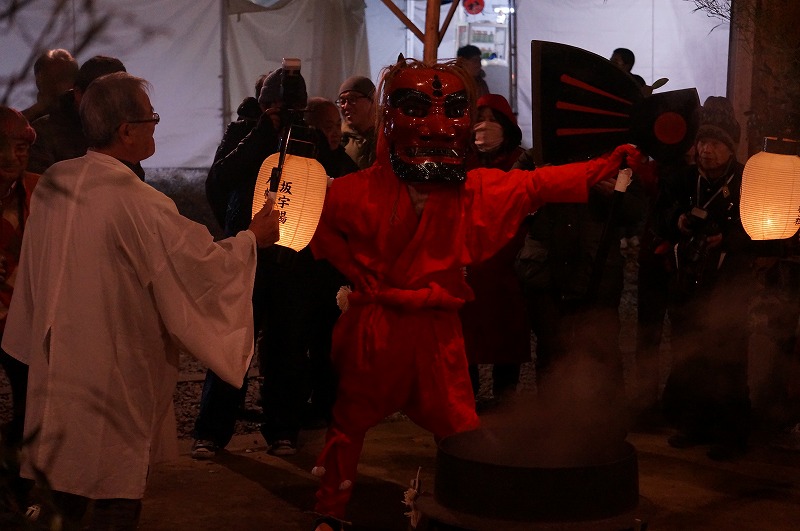
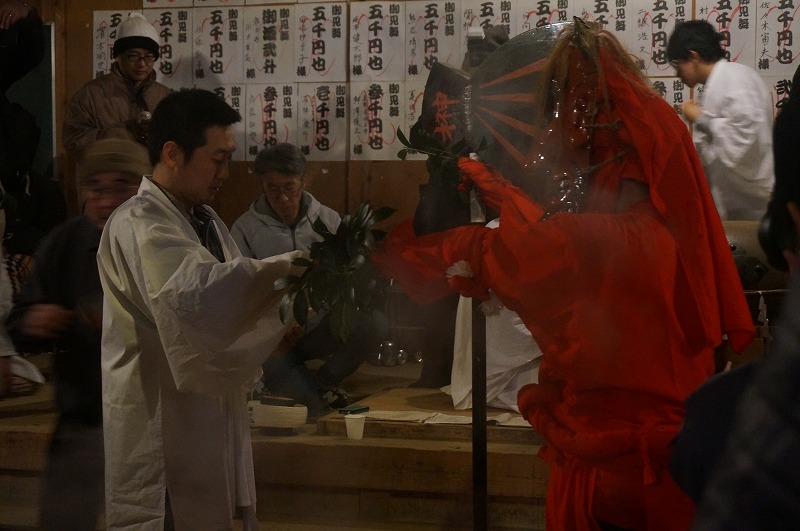
Sakaki Oni is a “Araburu kami” (raging god) who lives in this land. So people ask and answer questions to this Sakaki-Oni. “Why did someone like you come here?”
What’s a raging god?
Dictionaries describe him as a “violent god” or a deity not subject to the rule of the emperor. If myth is a projection of reality, it is a projection of history from the ruling side. However, there have always been people who resisted such things, and this can be said to be a symbol of that.
I often say that we demons are also people who do not obey the imperial court. Hey, Sakaki Oni, keep up the good work!
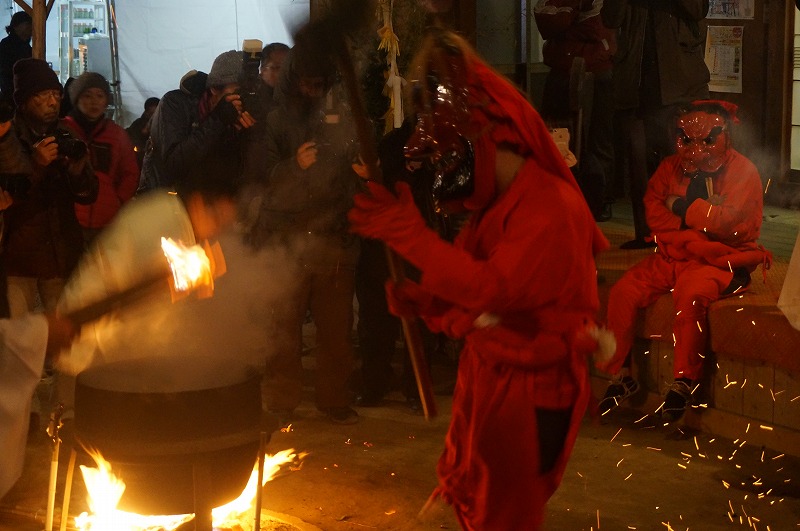
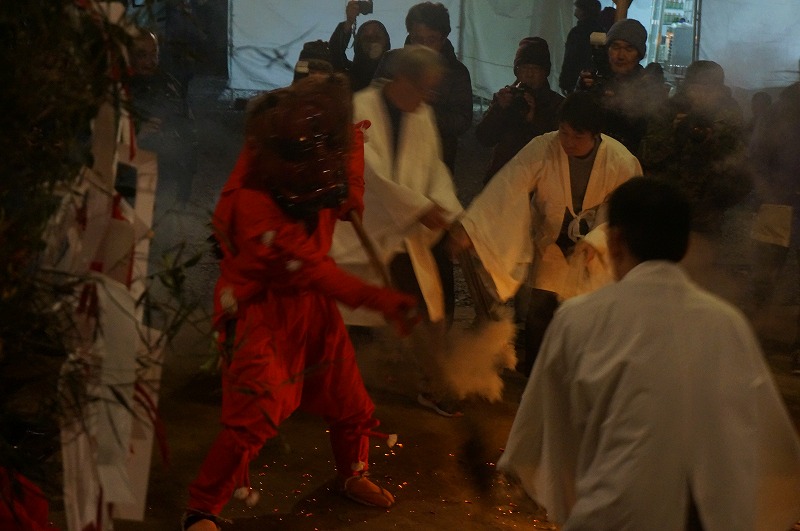
There’s a word ”Many kiss the hand they wish to cut off”.
Two-faced?
Yes. For people, the rules of their own land are more important than the rules of people in power. No matter what the powers that be say, if you offend the gods of the land, you can’t make a living. So it is only natural that they treat the local deity with the utmost care.
And they say we Oni are also the people who resisted and were discriminated against. We should be more proud of being Oni.
More on that later. From now ,the gods are coming to bless the people.
Negi, Okina, Miko (or Oturuhyala) 禰宜、翁、巫女(おつるひゃら)
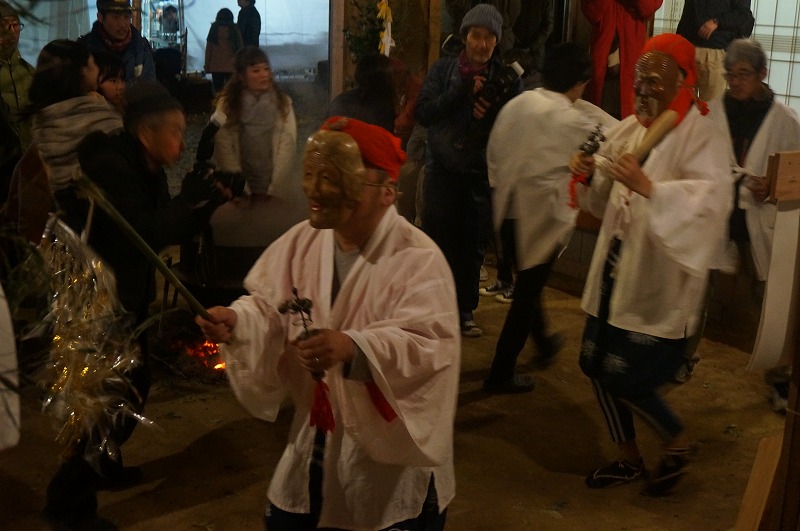
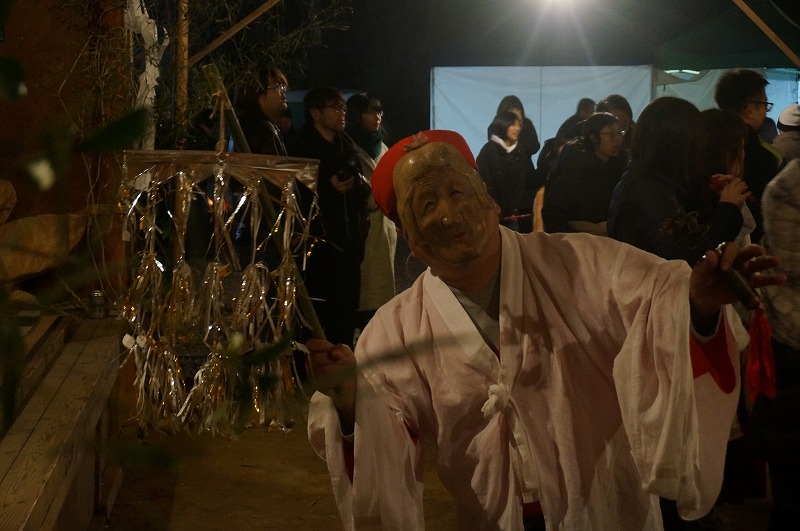
What are they doing? They’ve got something in their hands.
The stick has a miso paste on it, and if you put it on your face, it will bring you good health for a year. How do you like it?
Oh,no!
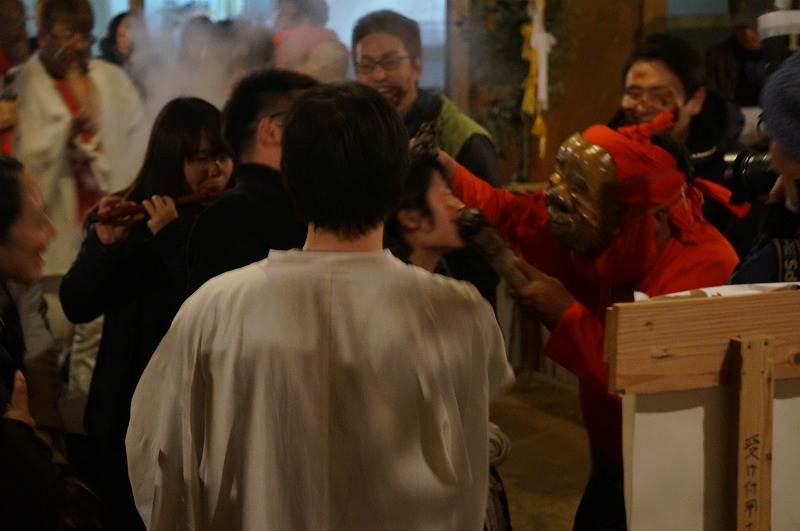
Breakfast, and Yubayashi 湯ばやし
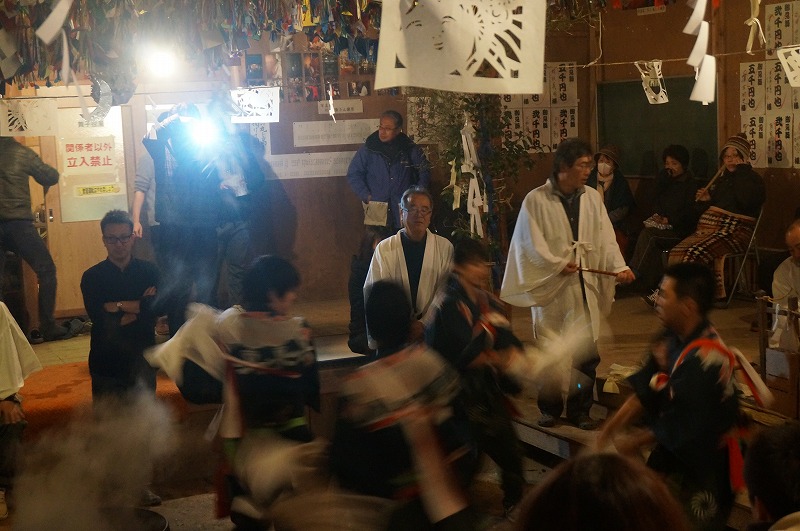
It is indeed getting cold. You have some time before the yubayashi, and there is time for breakfast, so get some rest.
Breakfast starts at 6:00 a.m. Bread is main and soup, salad, etc.
And the time is around eight o’clock. It’s getting light around here. This is when the “yubayashi,” the biggest spectacle of the festival, begins.
Finally, the yubayashi begins. The scheduled departure time was 8:00 a.m., but we will move it back one hour.
It’s already past 8 o’clock. I’ve totally fallen asleep. But the dancers are amazing, even though they’ve been doing it all night. They are full of energy.
The festival started the other evening and has already lasted over 15 hours. Even after arriving on the tour, it has been more than 10 hours. Since the population is small, the same person appears in several dances, which puts a considerable burden on them. Even so, there is not the slightest sign that their energy is waning.
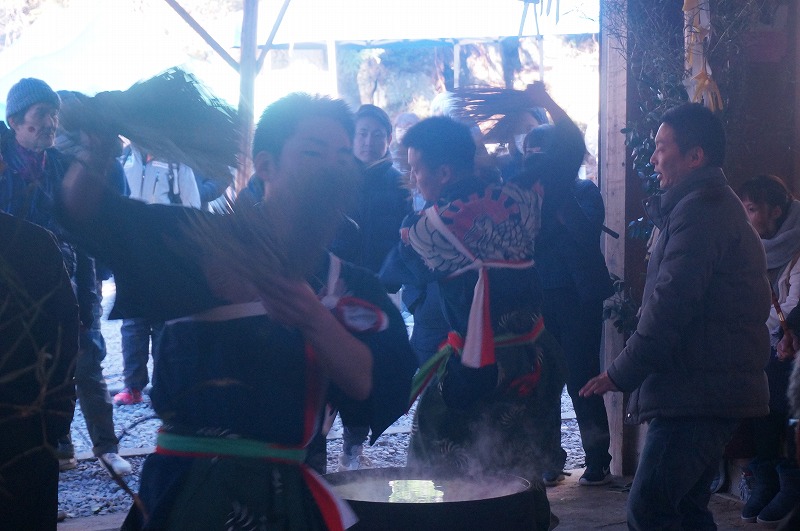
We slept and ate breakfast on the way, so we are fine, but why do these people have so much energy and stamina when they dance here almost all night long?
Is this the power of the festival? Still, I feel that the festival is becoming more and more exciting.
Now, it’s time!
The dance moves toward the center as if to send chi toward the already extinguished hot water pot.
To-hore, sanya, to-hore, sanya
Like a wave that comes and goes, excitement rises to a peak and then settles down again. This is repeated over and over again, and finally the time comes.
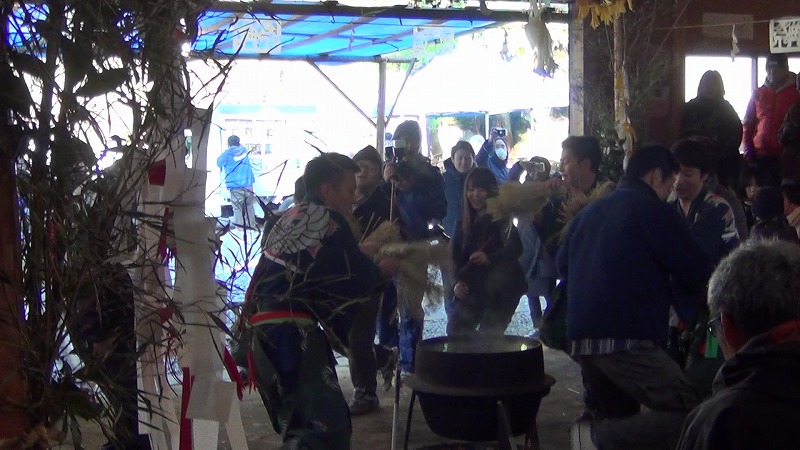
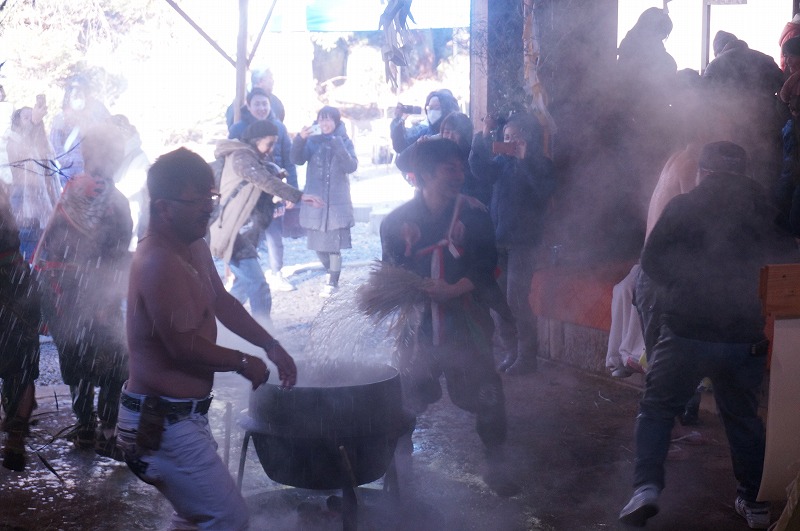
The dancers dip a bundle of straw in their hands with plenty of hot water from the cauldron and sprinkle it vigorously.
Wow, everywhere is soaking wet.
The fire has been out for a while, so the heat must have diminished considerably, right?
That’s not the point.
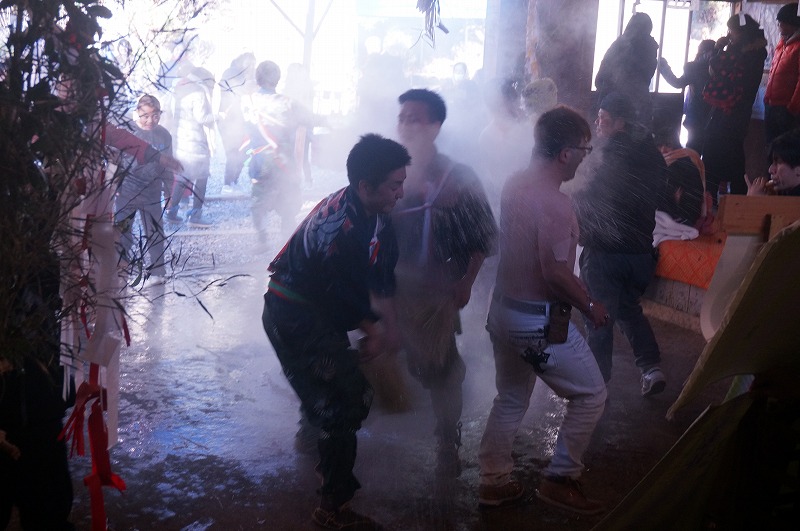
Asa-Oni 朝鬼~ ending
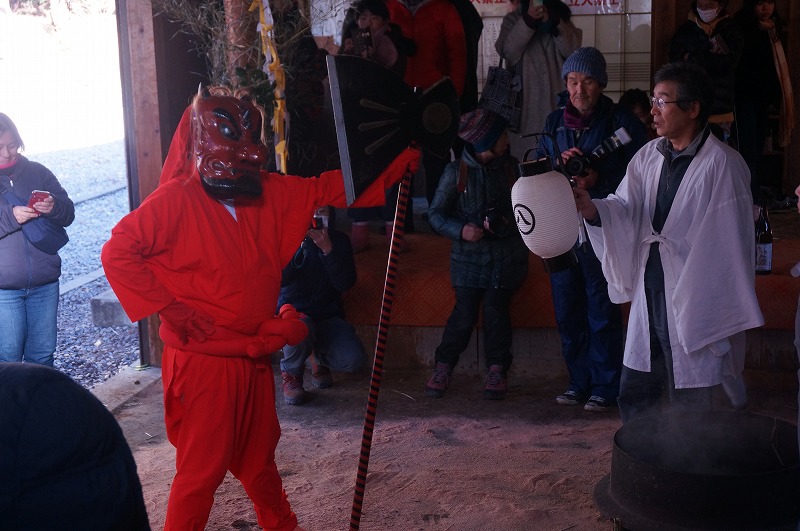
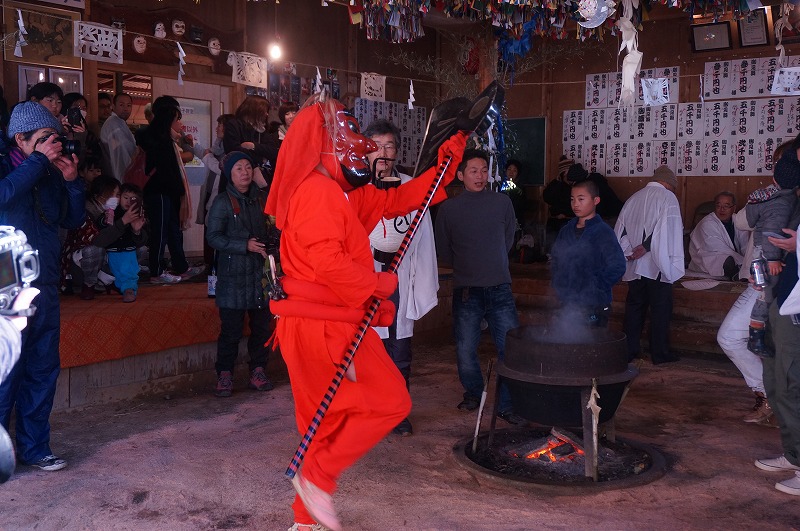
After the Yamami-oni and Sakaki-oni, the last Oni appears. That is the “Asa-oni”. The literal translation is “morning oni. The Asa-oni knocks off the symbol of the gods that is suspended from the “maido”. Next, a lion appears to purify the scene. After that, People return the deities they invited back to where they came from, and all festivities come to an end.
But it’s time for us to leave.
After this, we will stop at a hot spring on the way back to Toyohashi Station. You must be tired overnight. Please take a long soak in the hot spring and recover your energy!
I’m lucky as “Oni” to watch this festival.
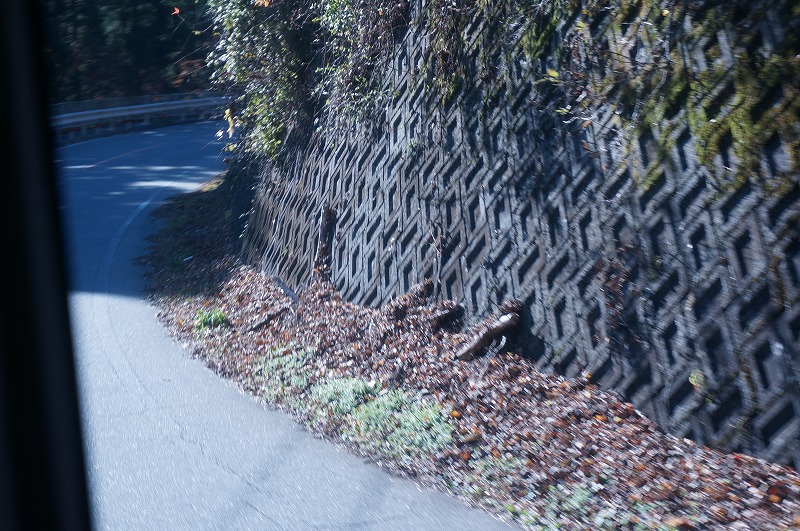
Fifteen Hana Matsuri have survived throughout the region, and although the people in each community suffer from a shortage of labor, they held between November and March of the following year. In order to support the festival, buses run late at night from the nearest station to each area on the days when the festival is concentrated, and travel agencies offer tours such as the one introduced in this article. It is one of the festivals where you can feel the original landscape of the Japanese people.
I would like to conclude with a comment posted on Instagram by a young woman who lives in the area.
She commented, “Life in general is inconvenient here, too, but I think it’s okay to continue living here because of the Hanamatsuri.”
